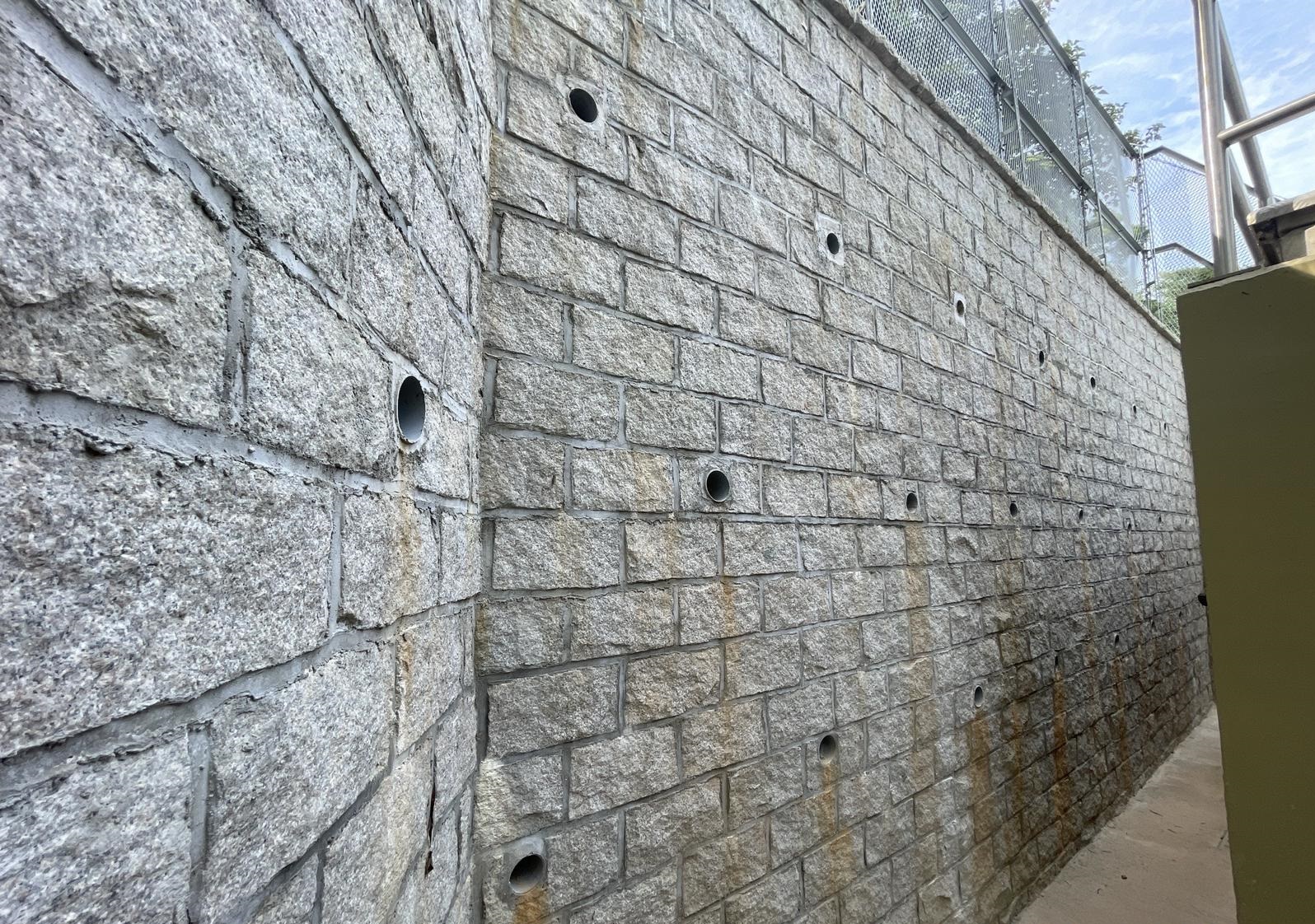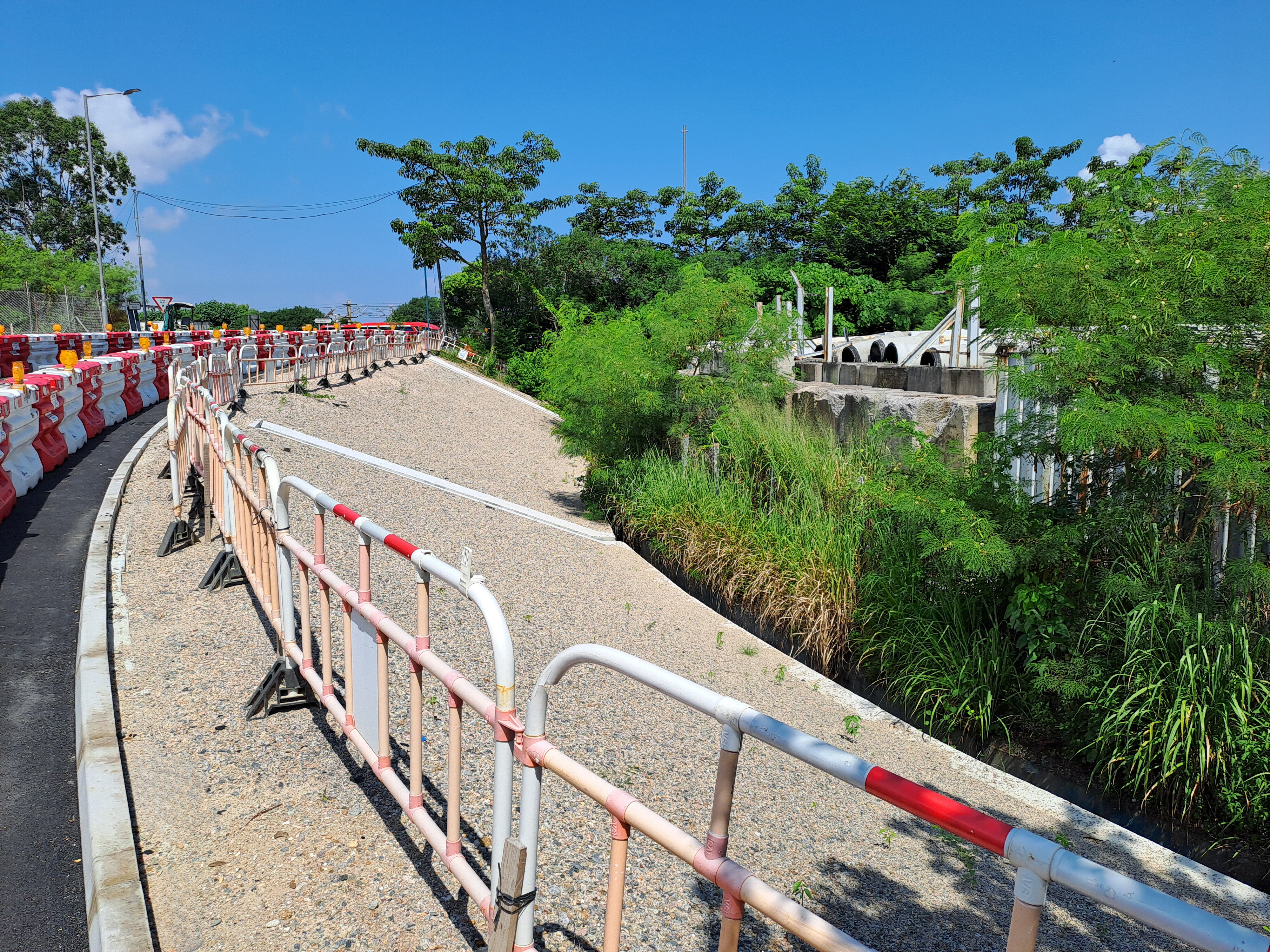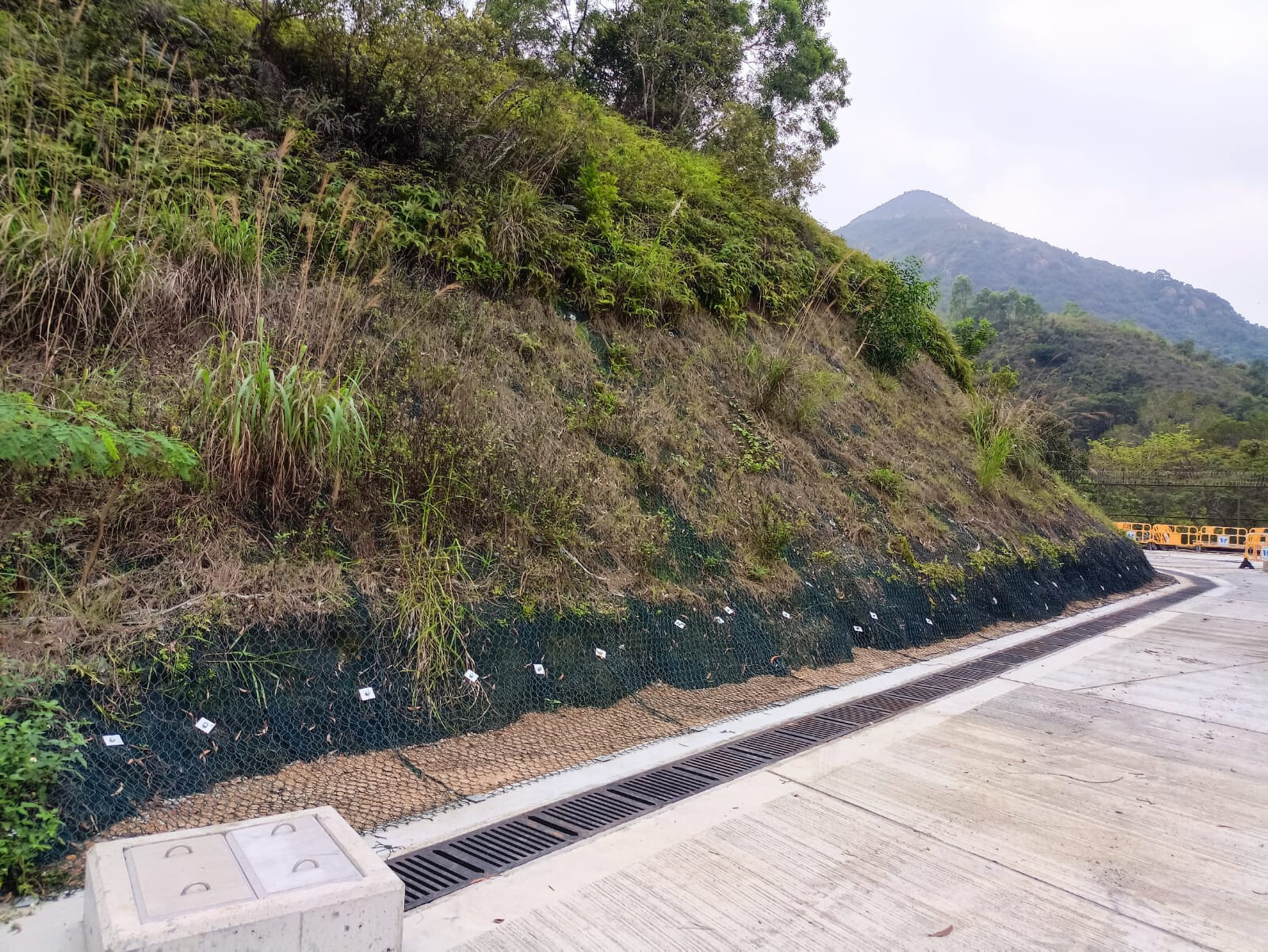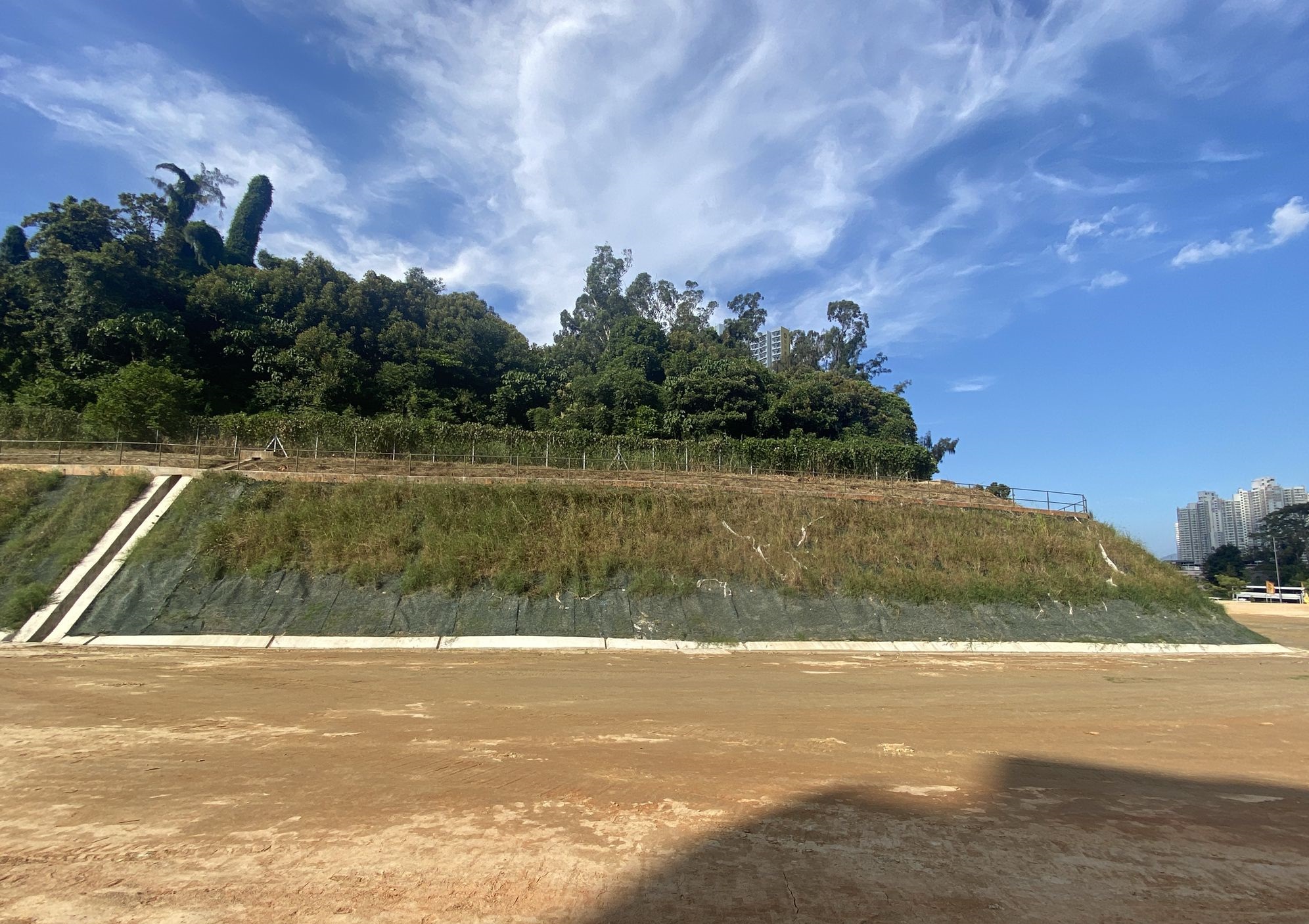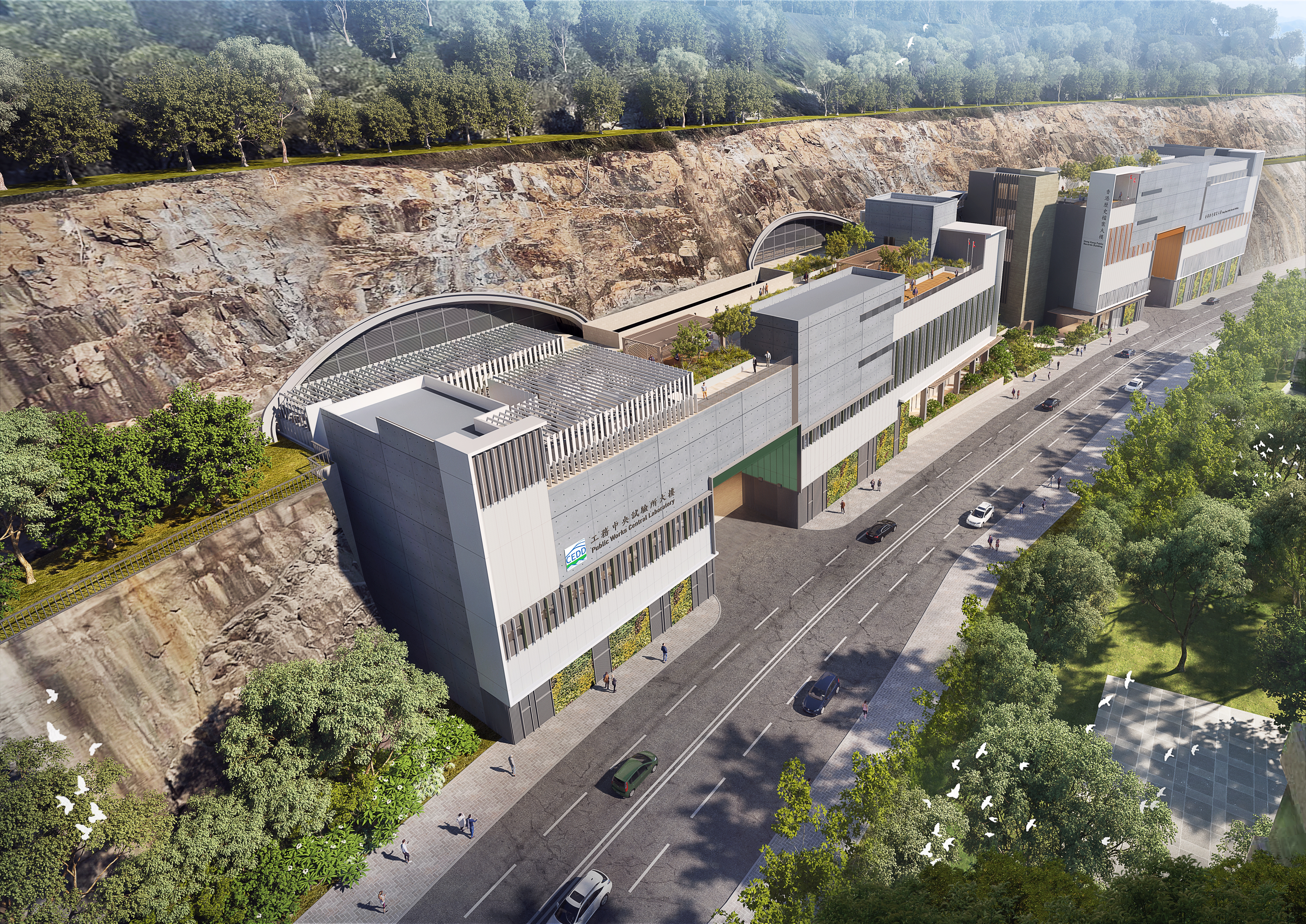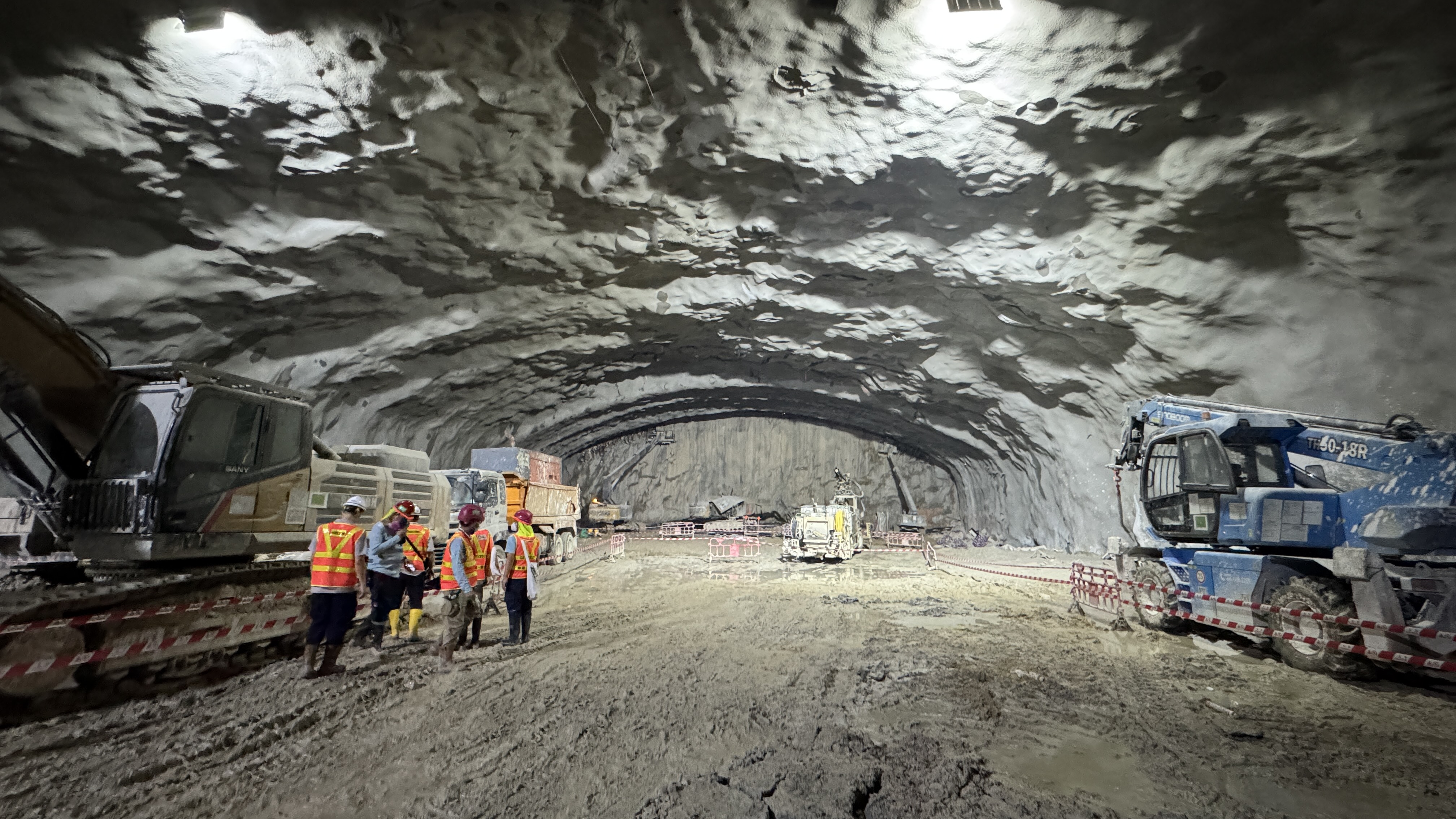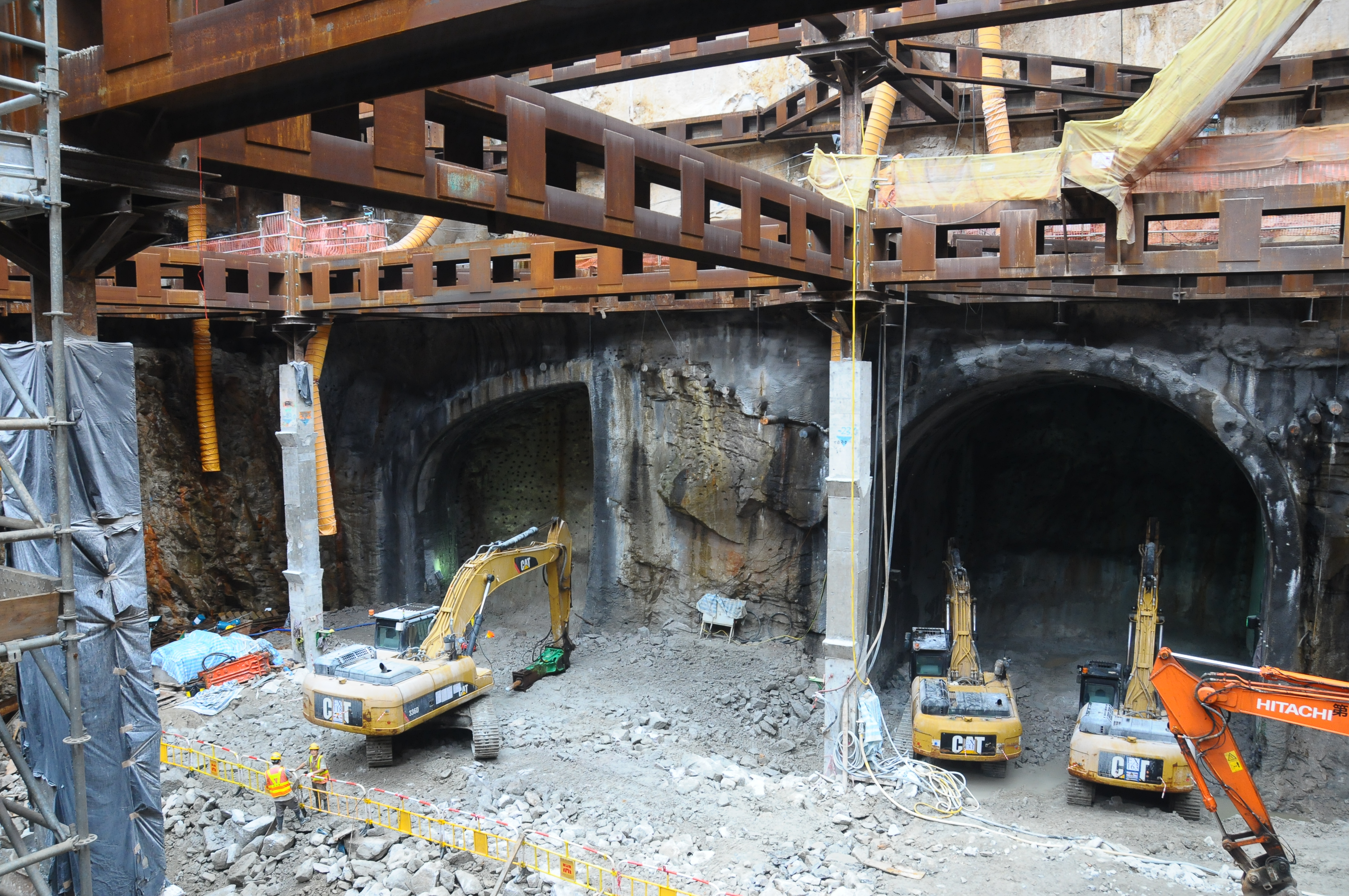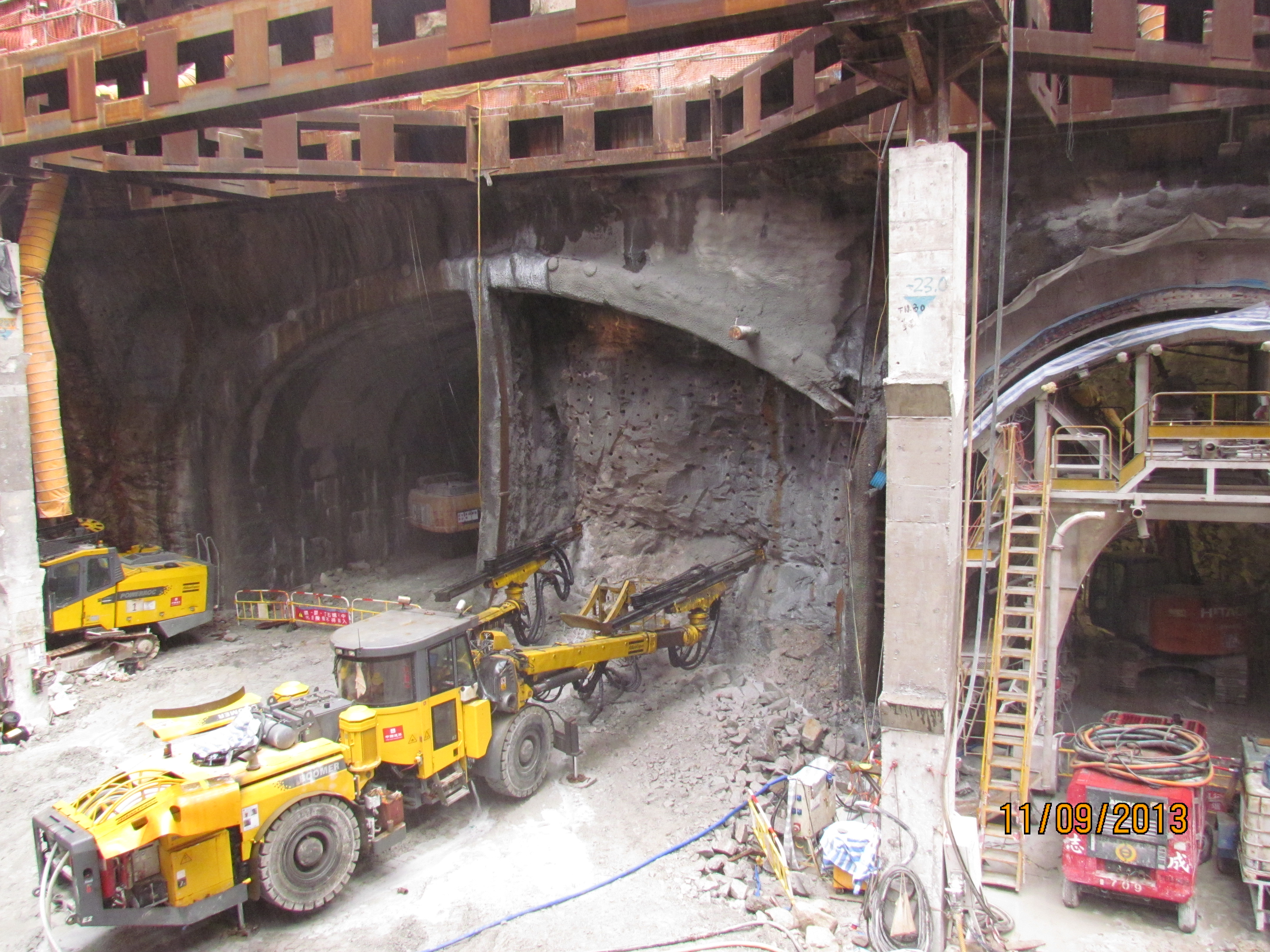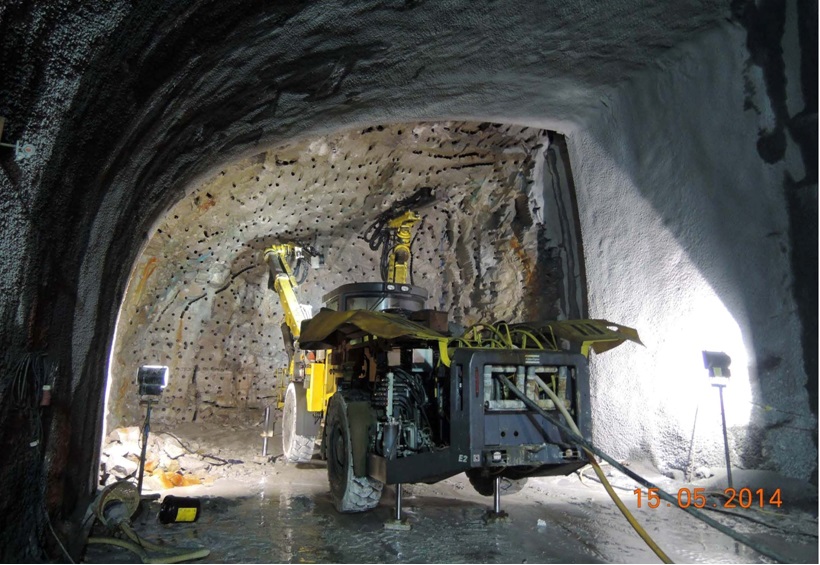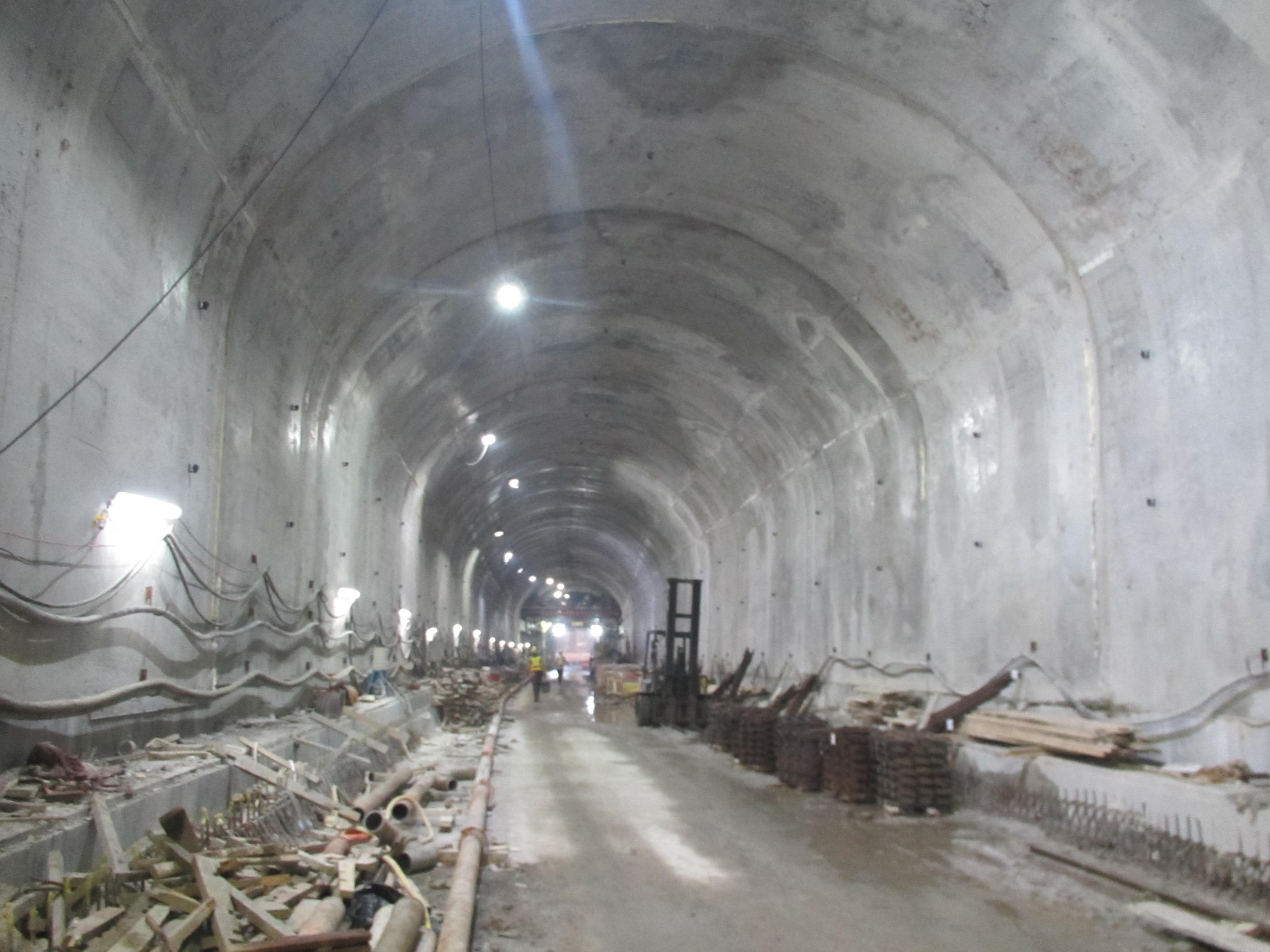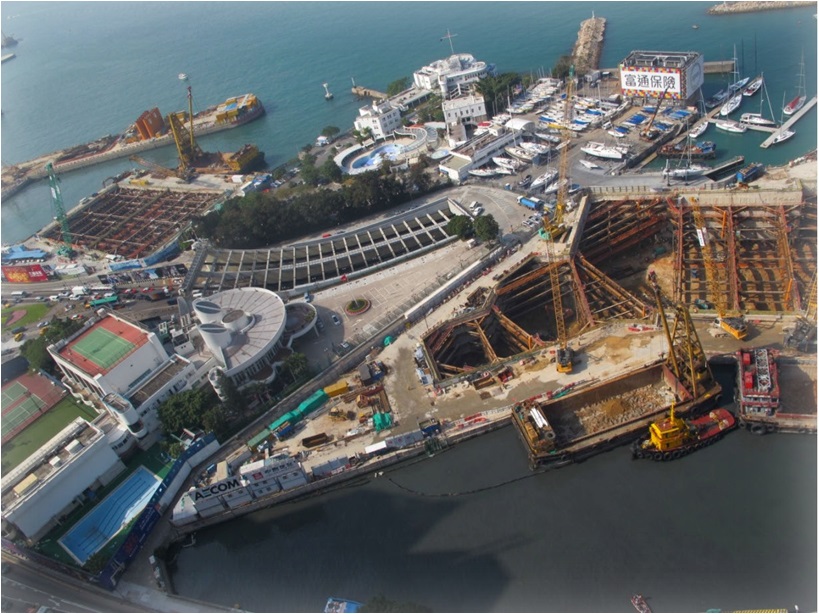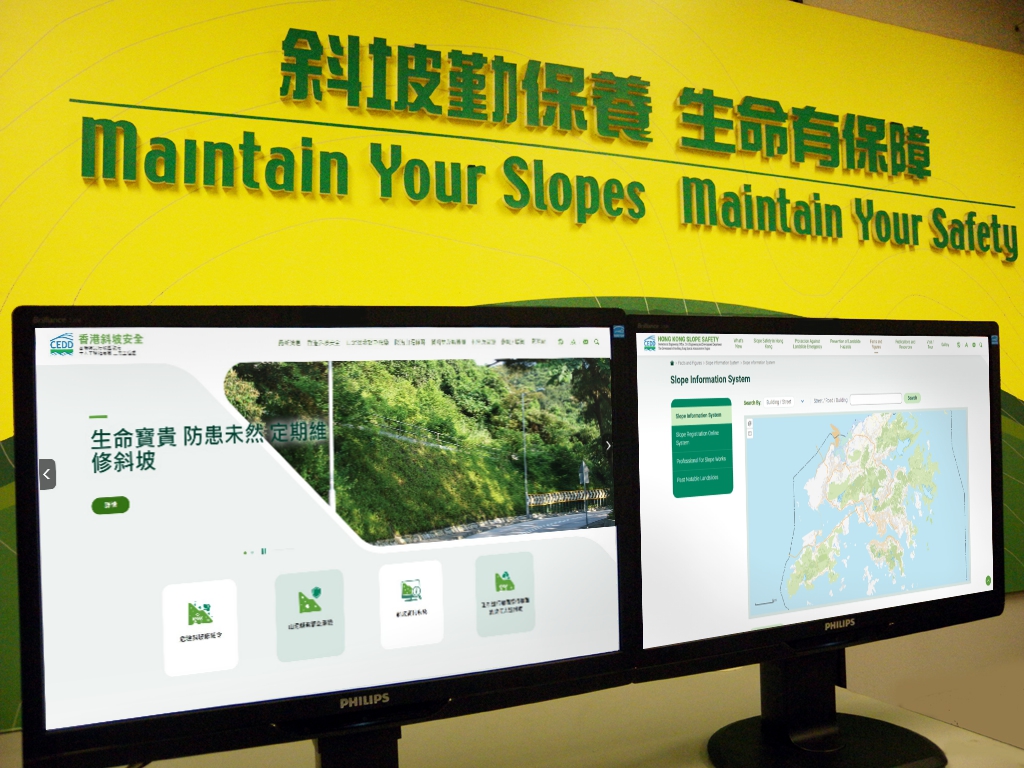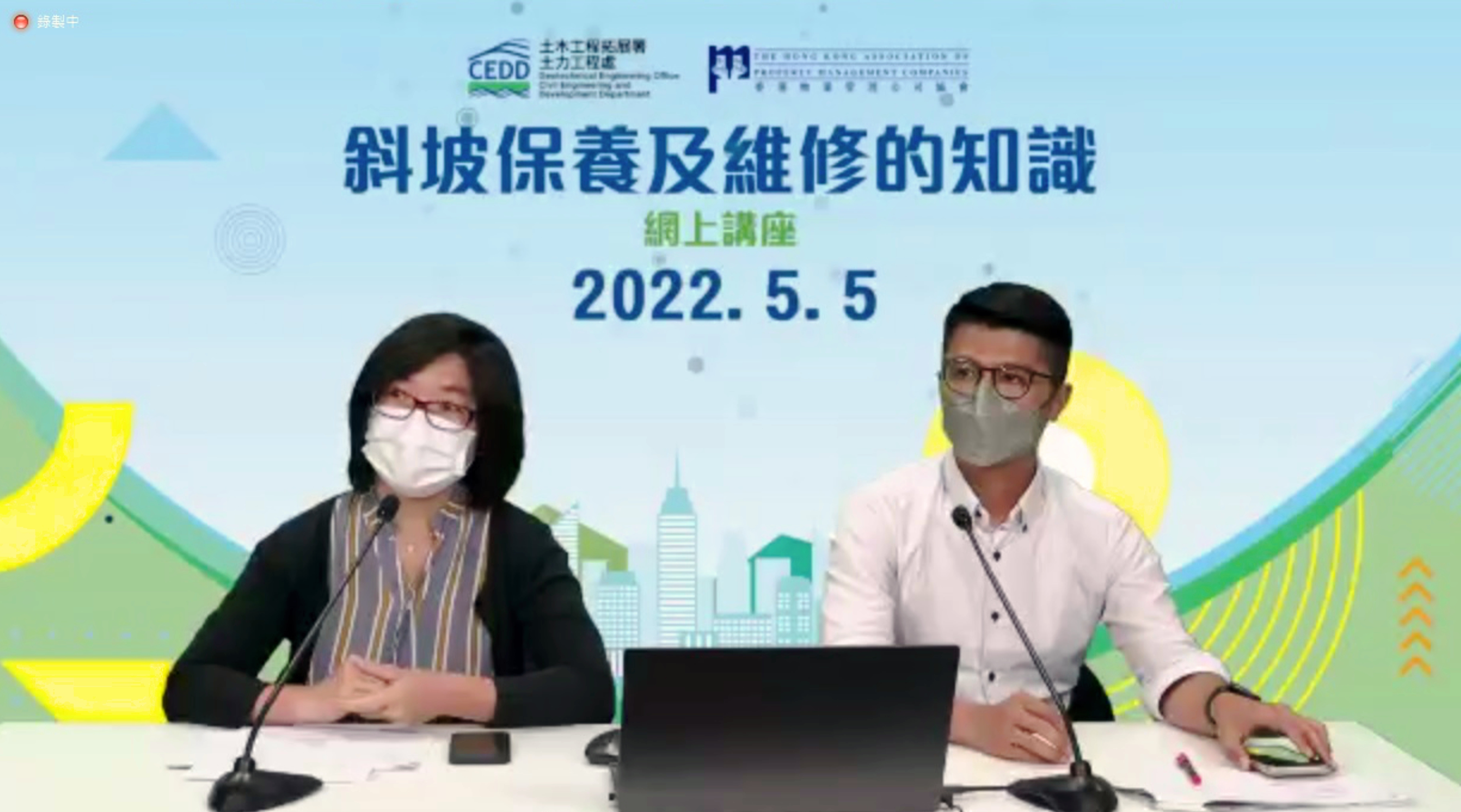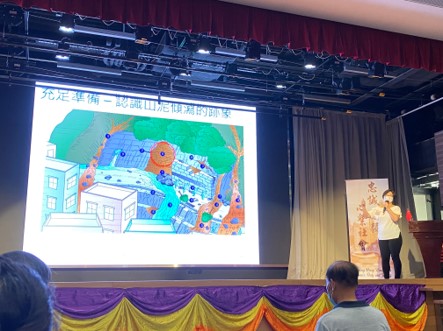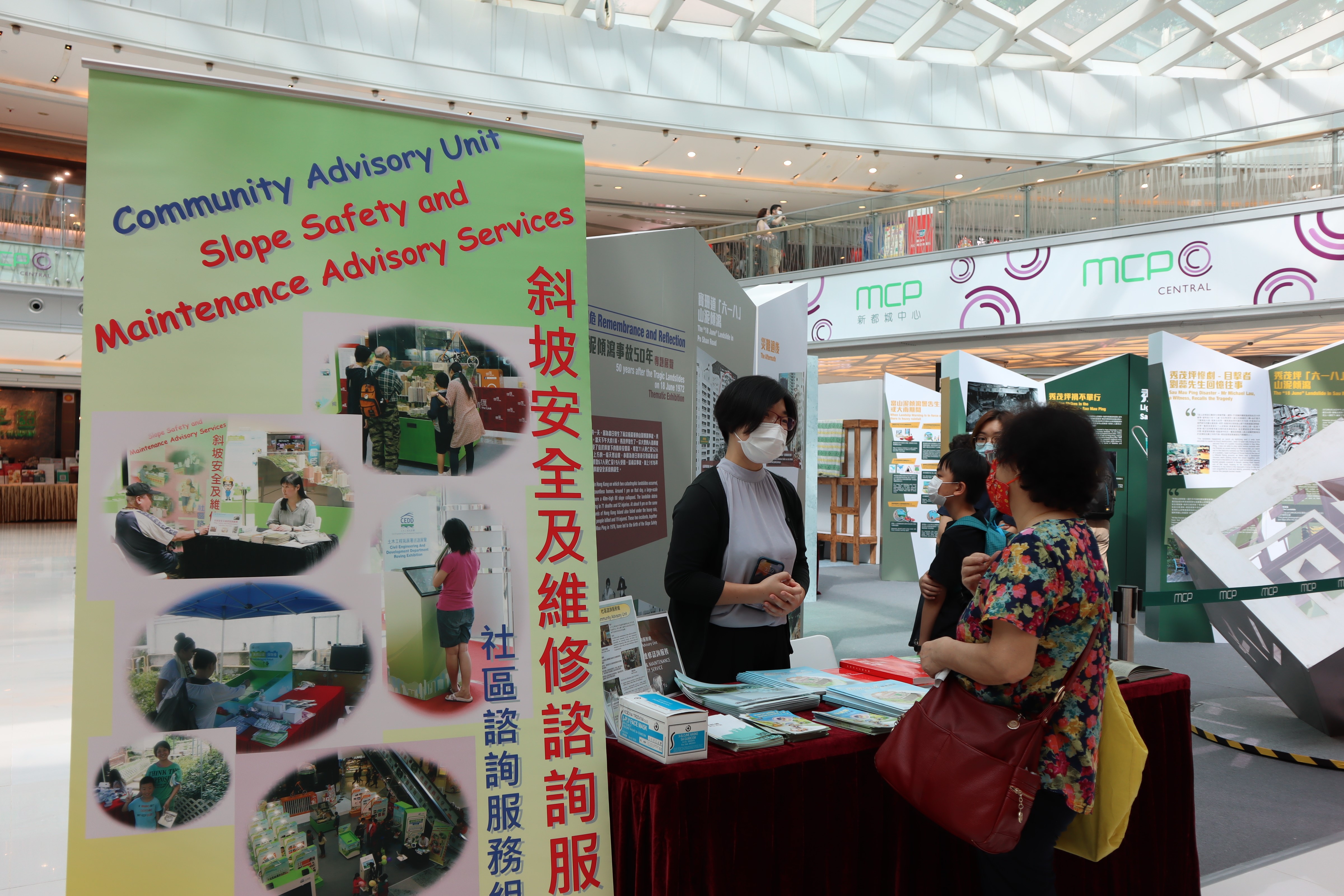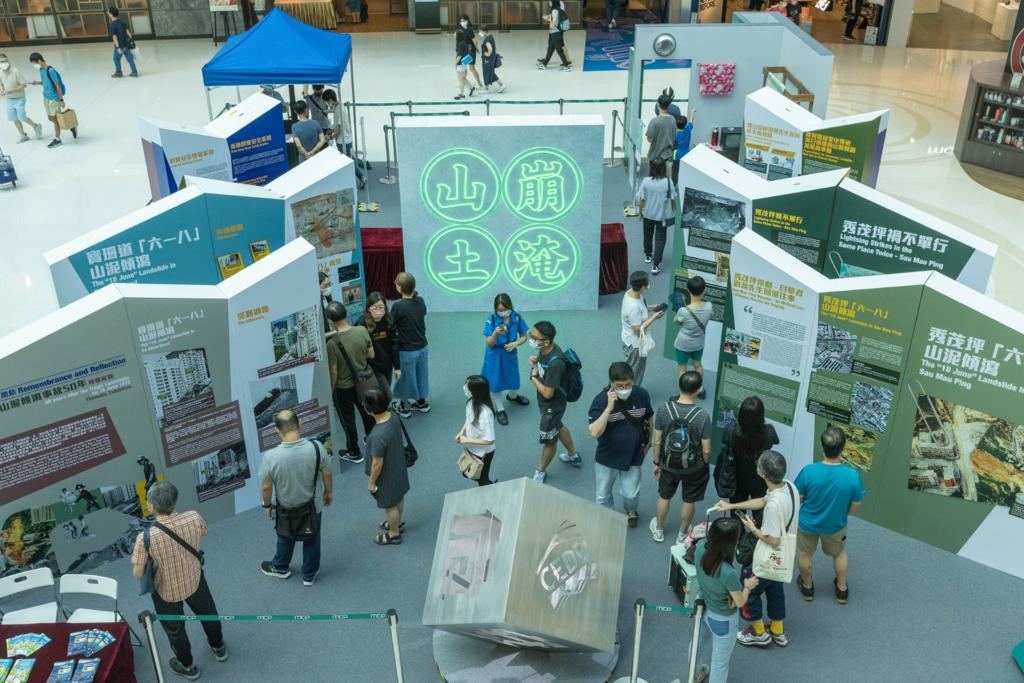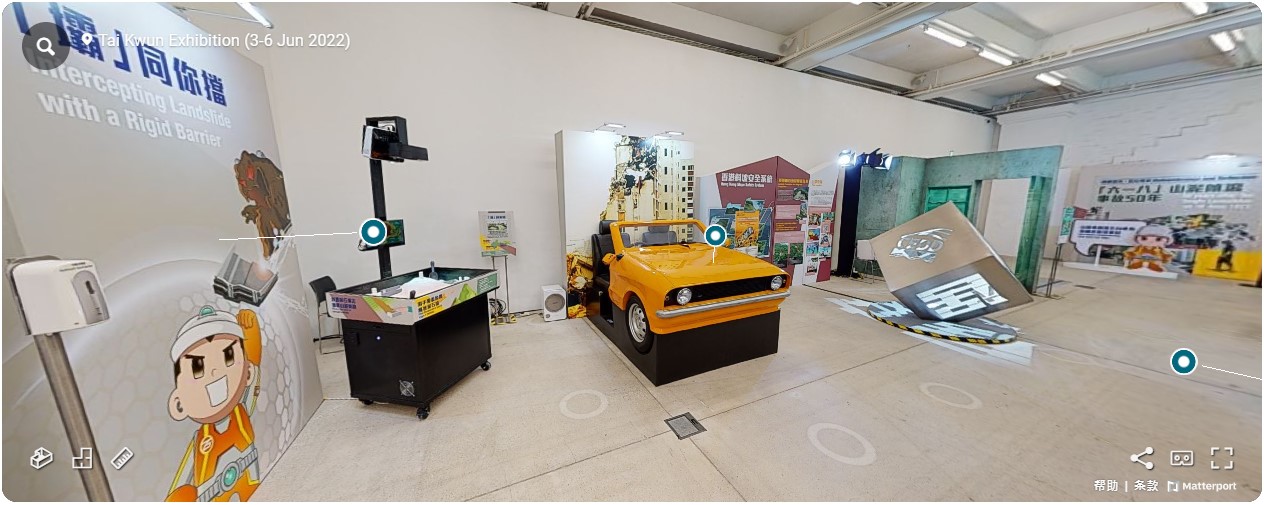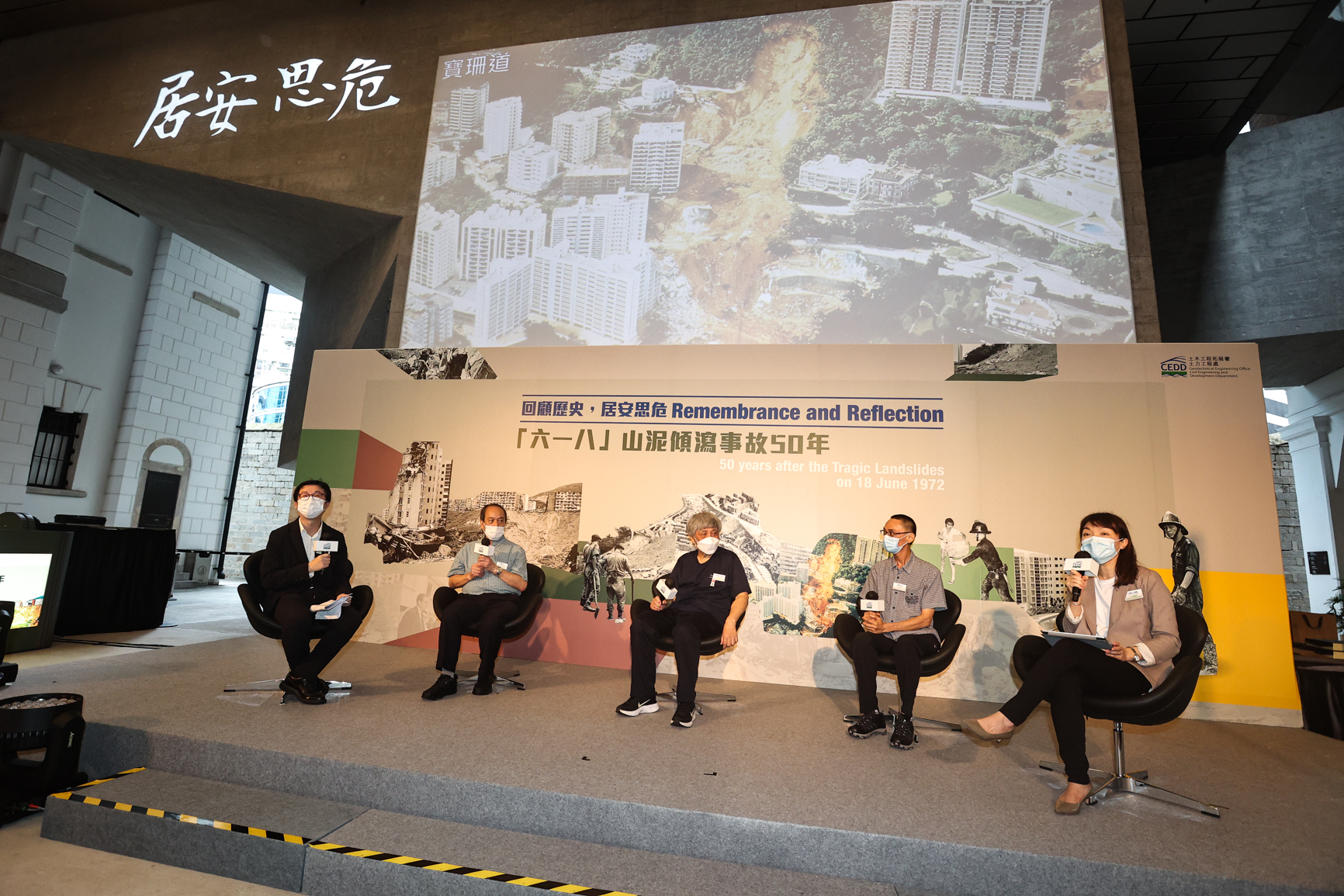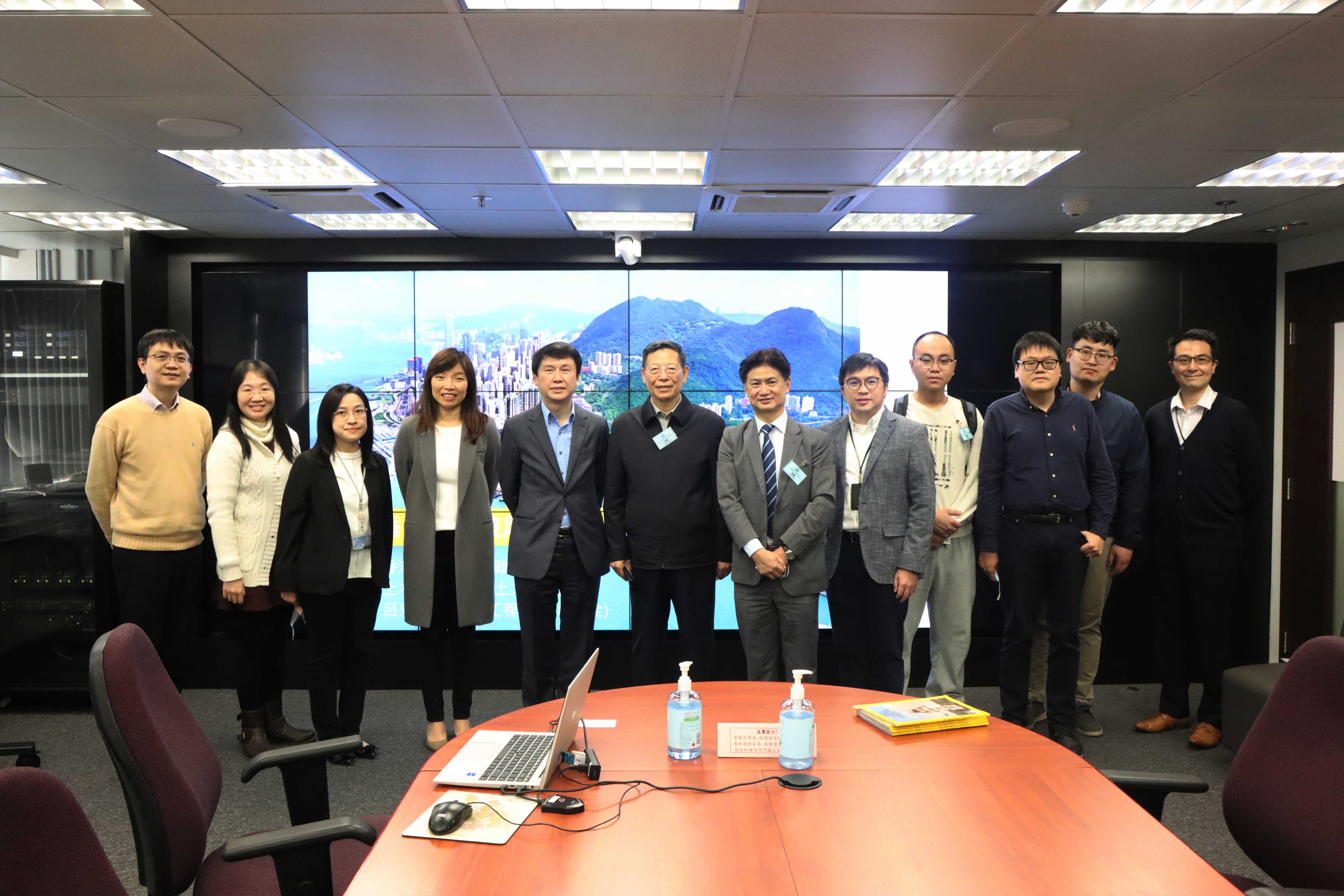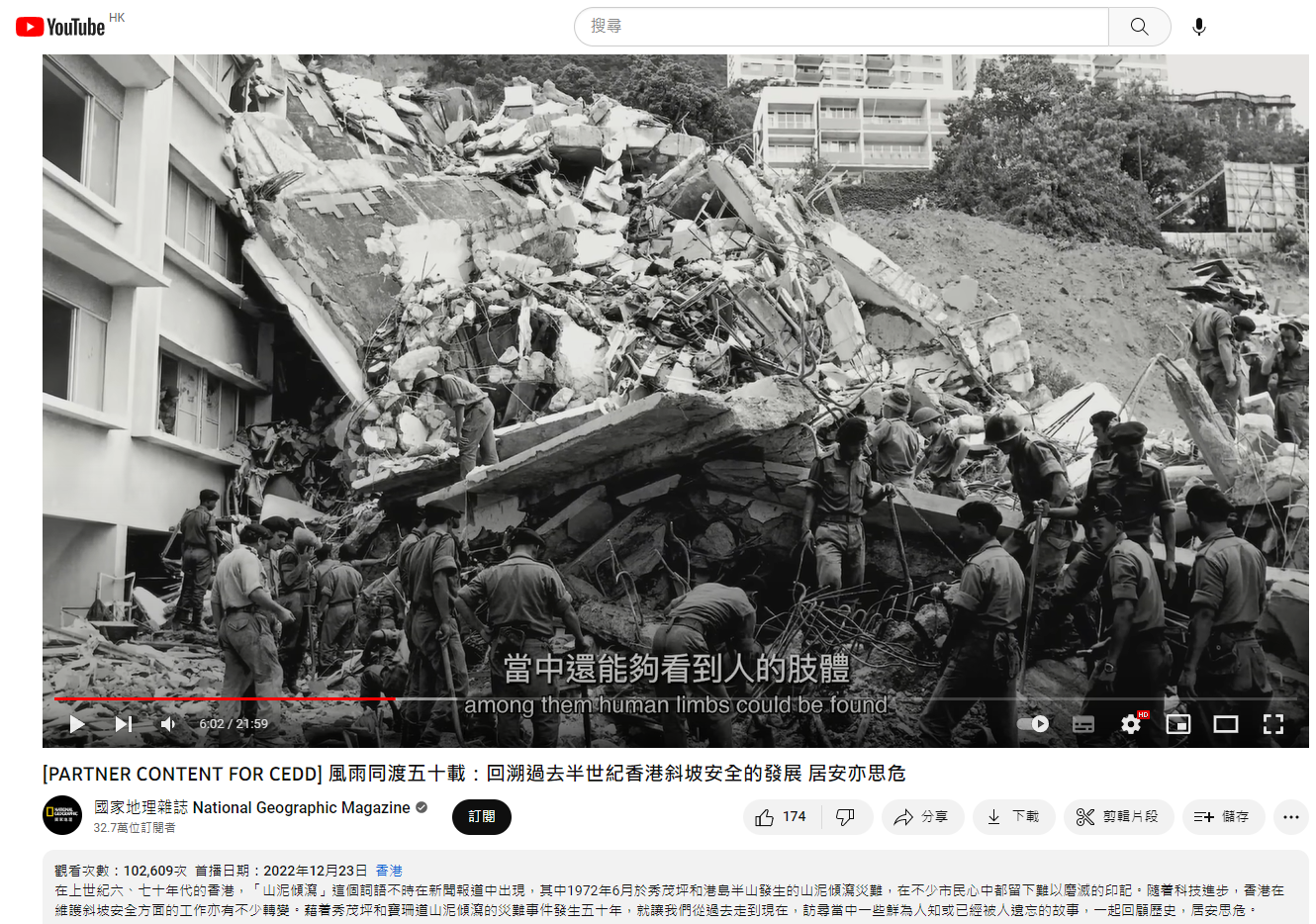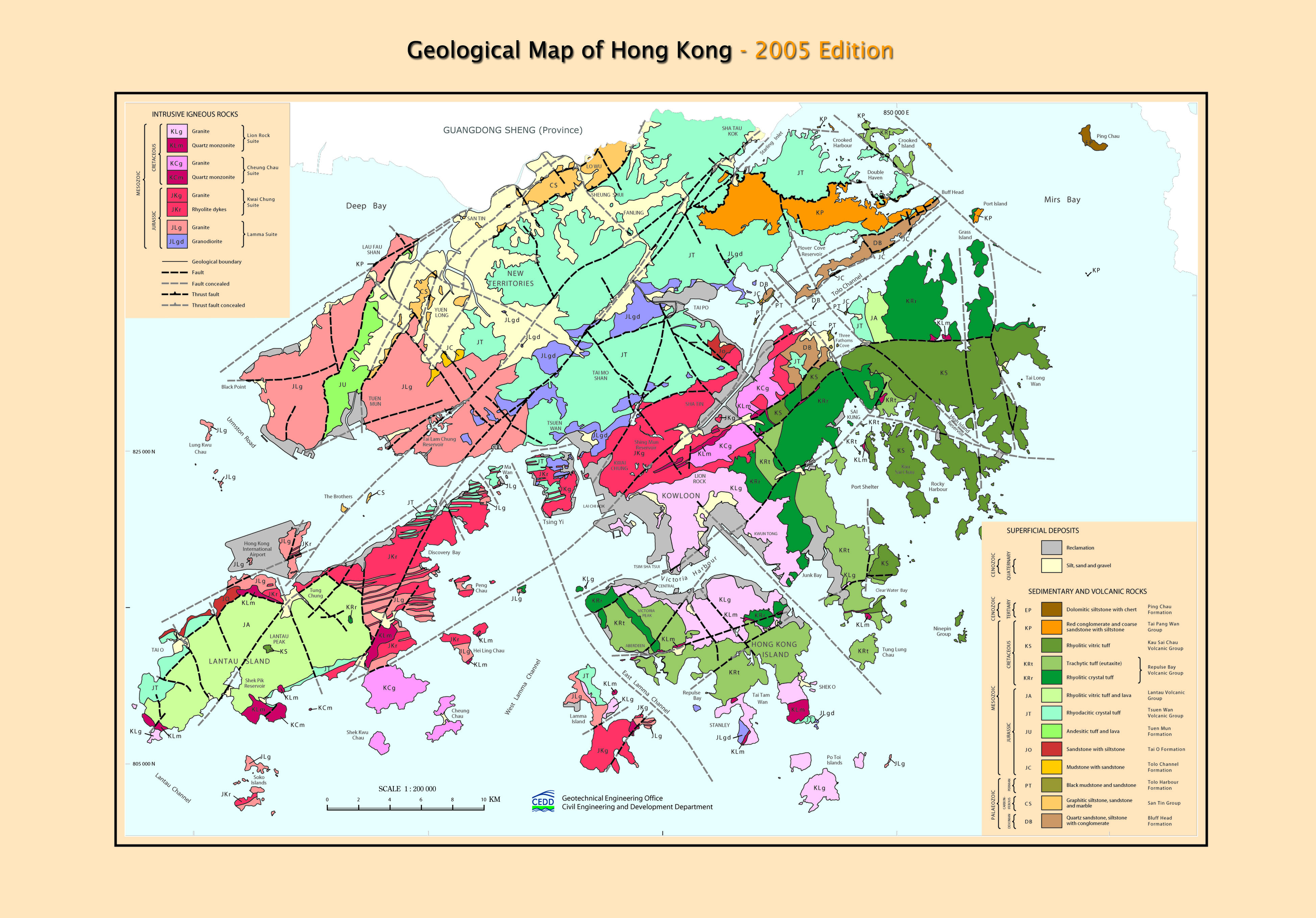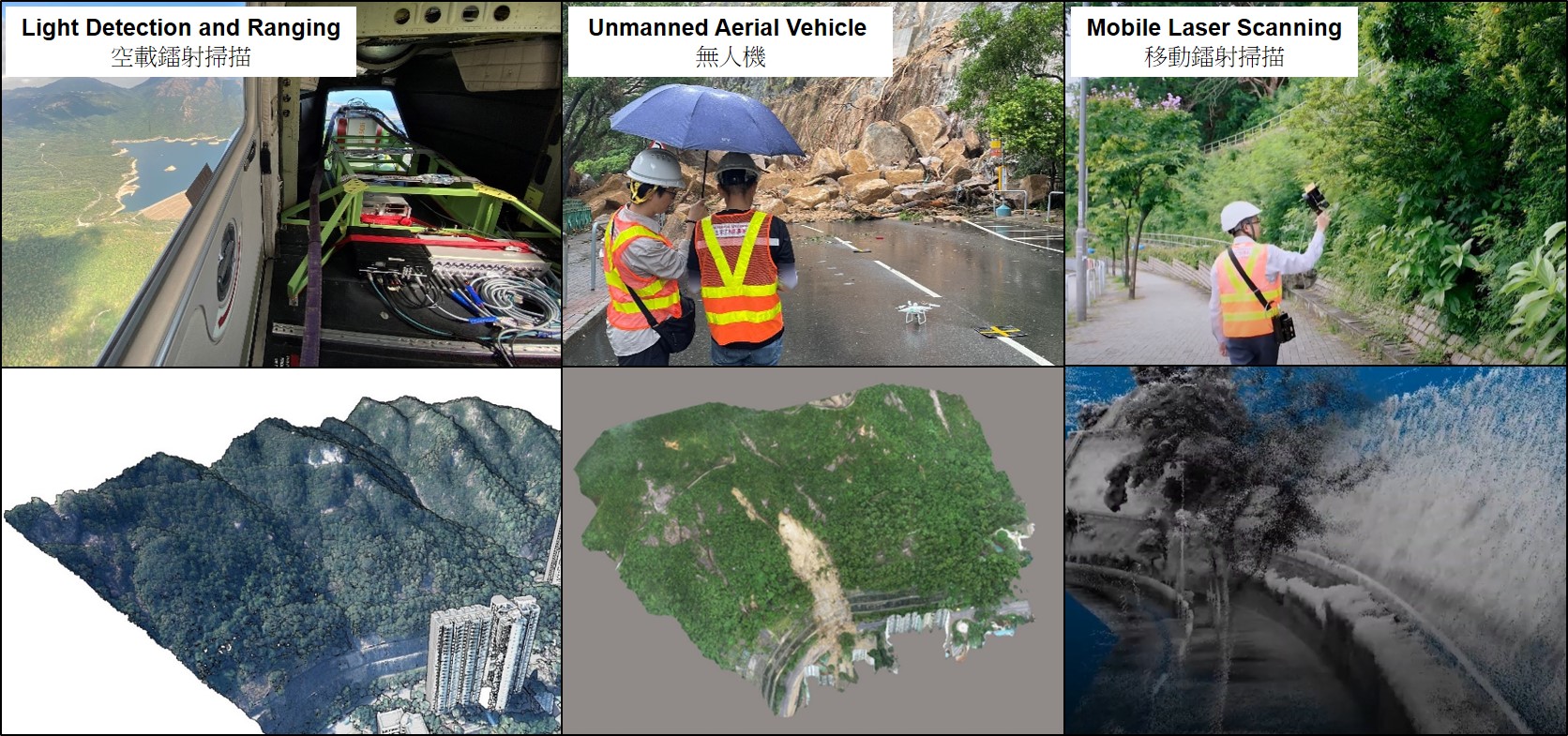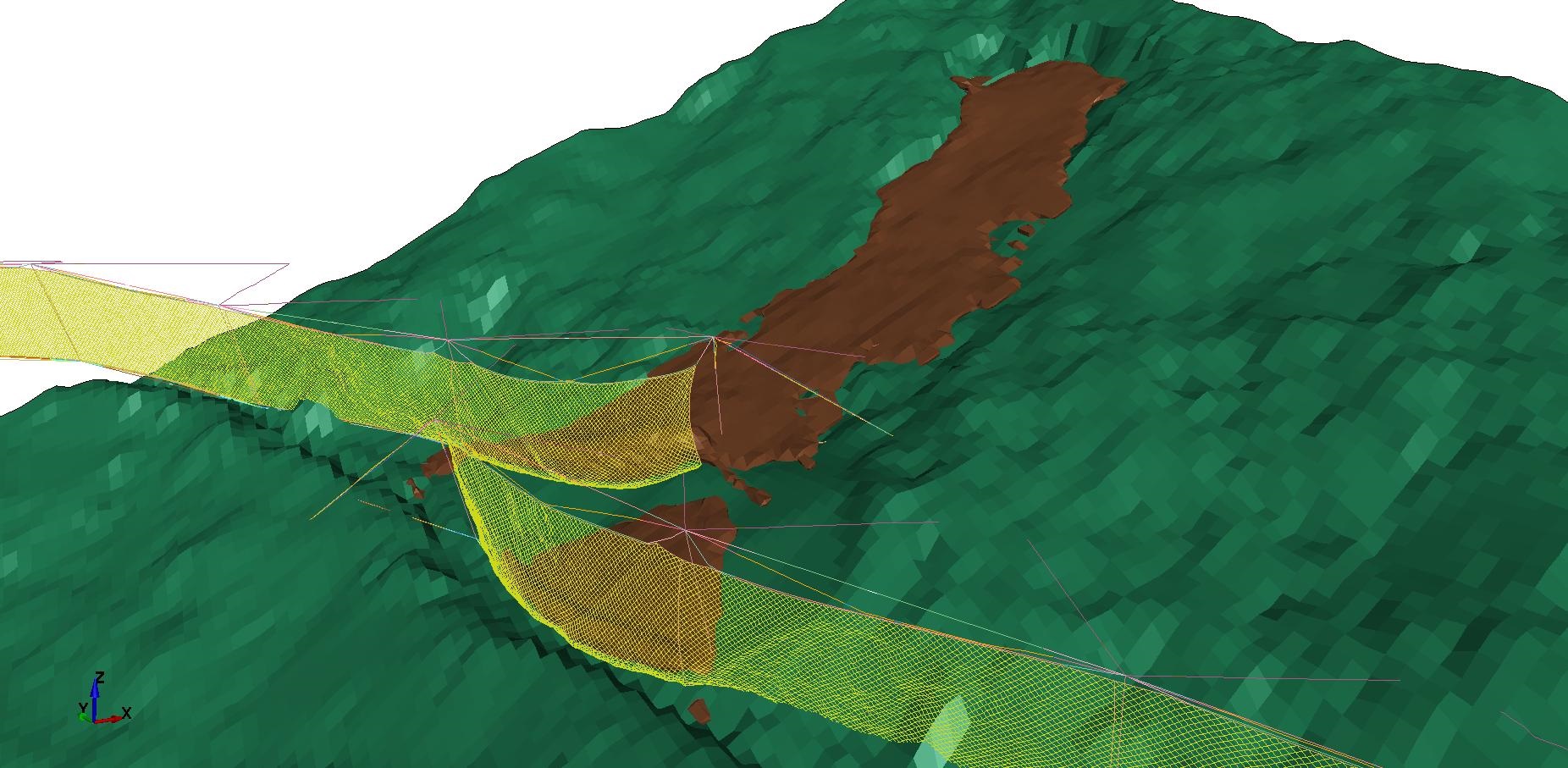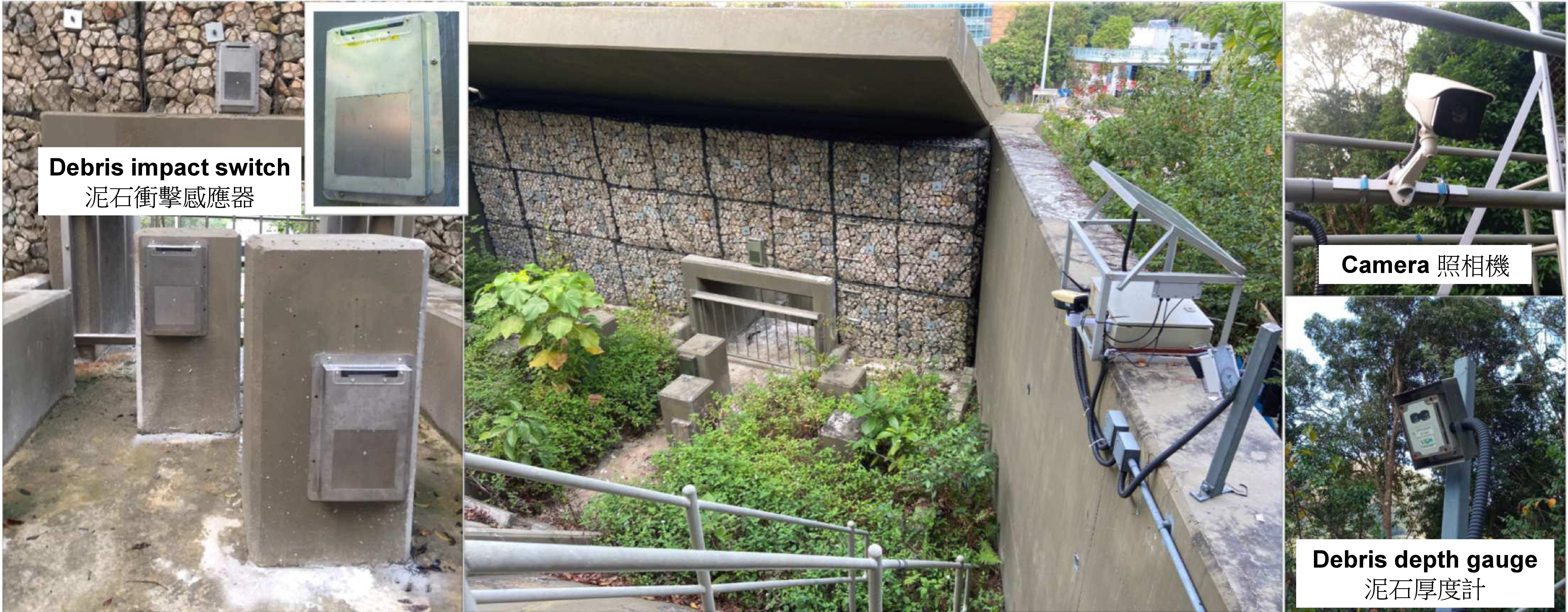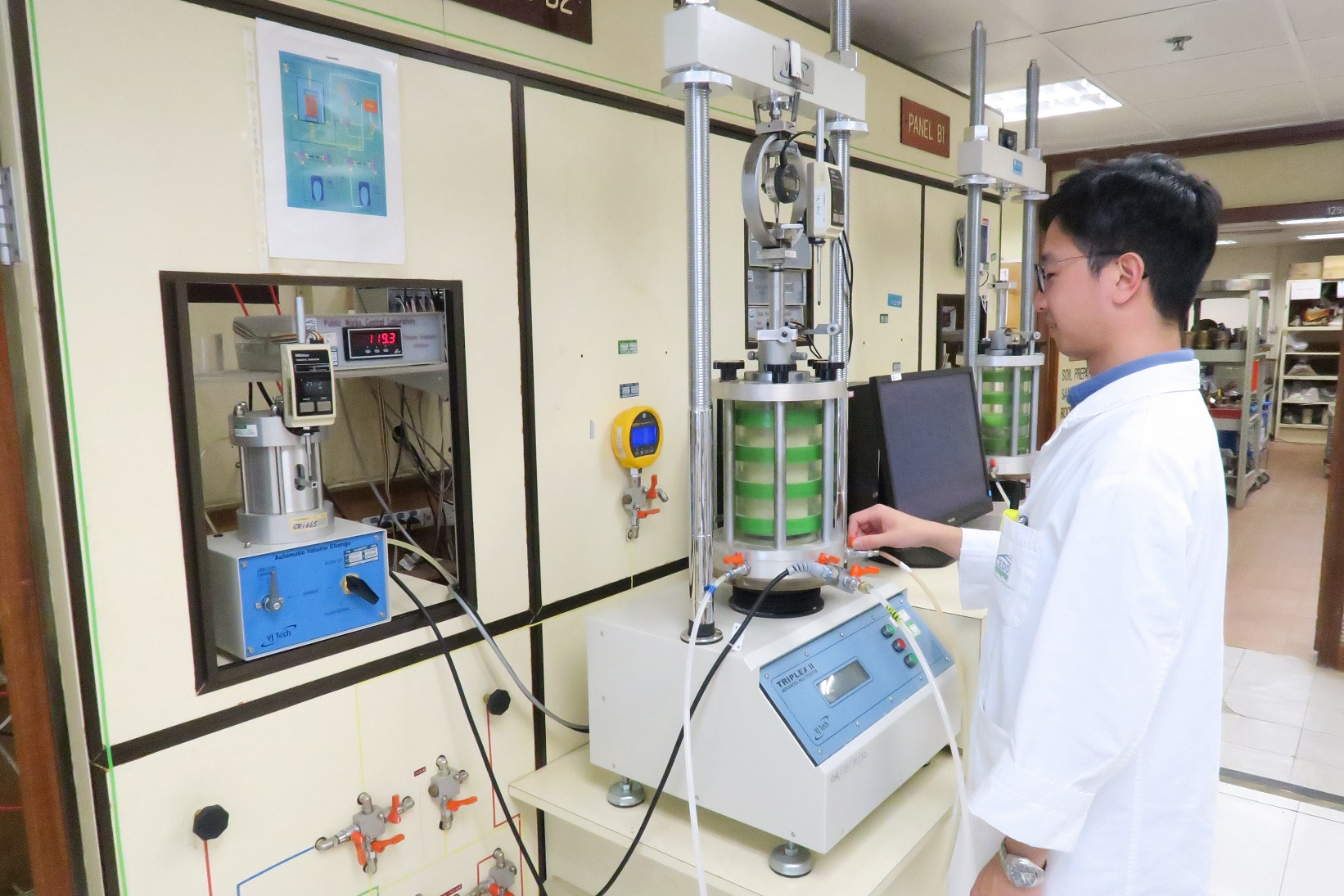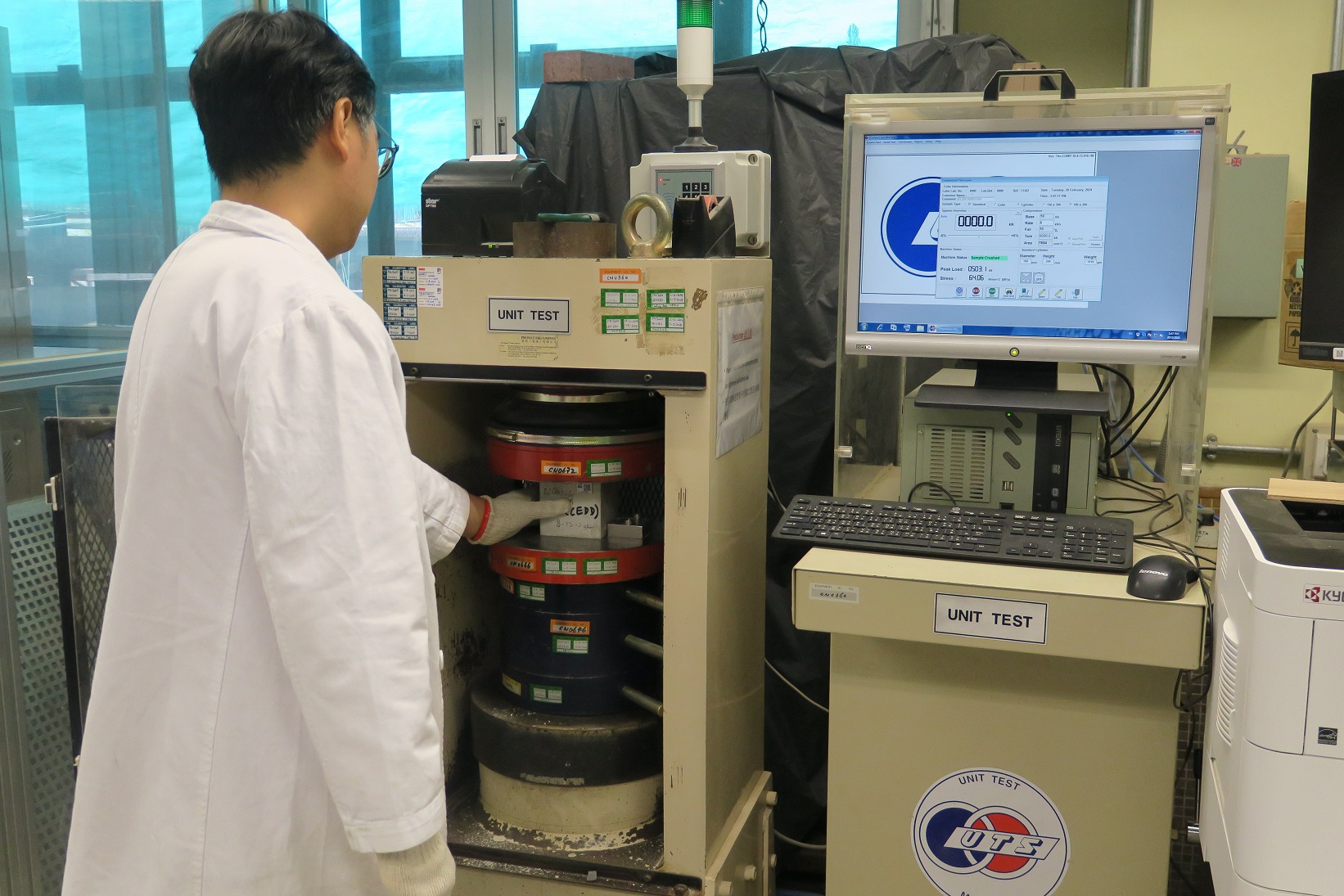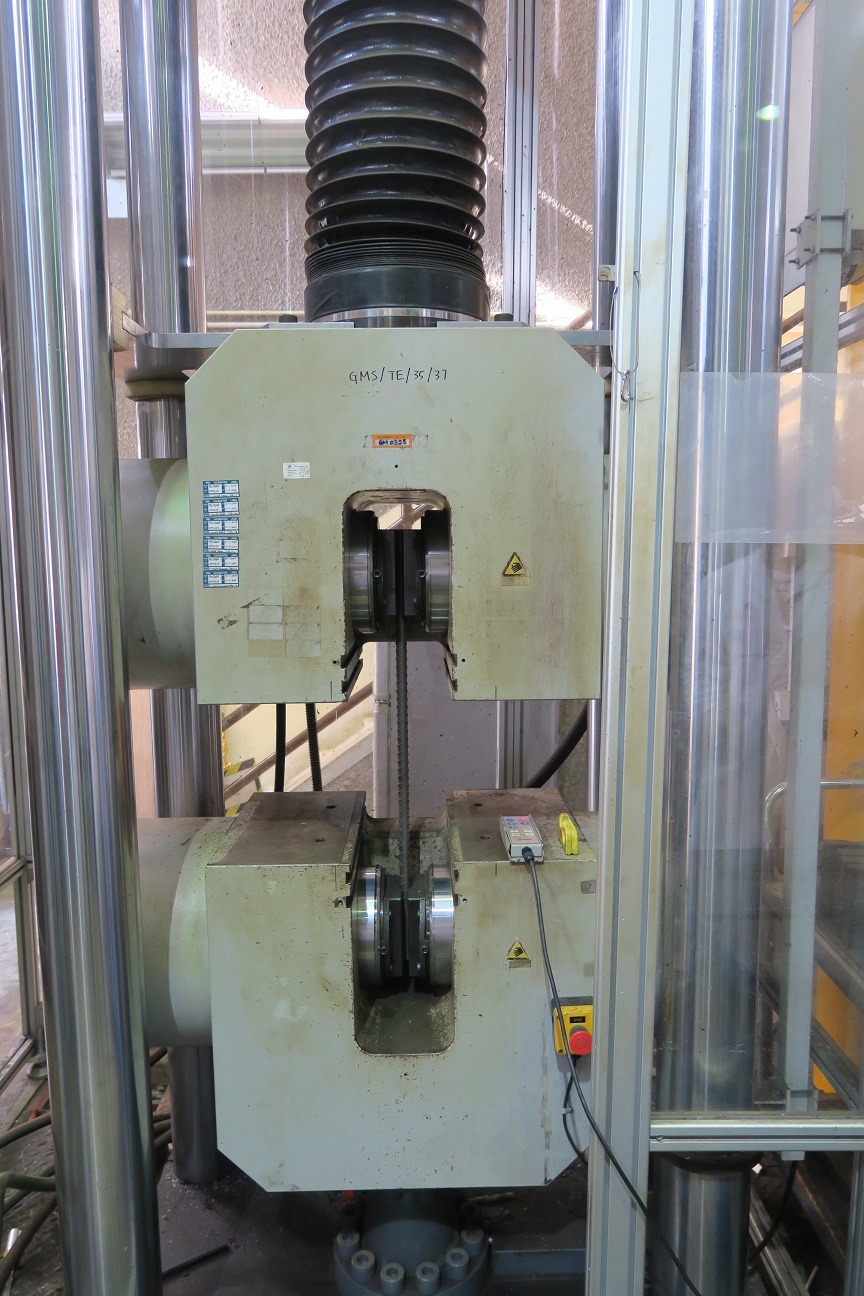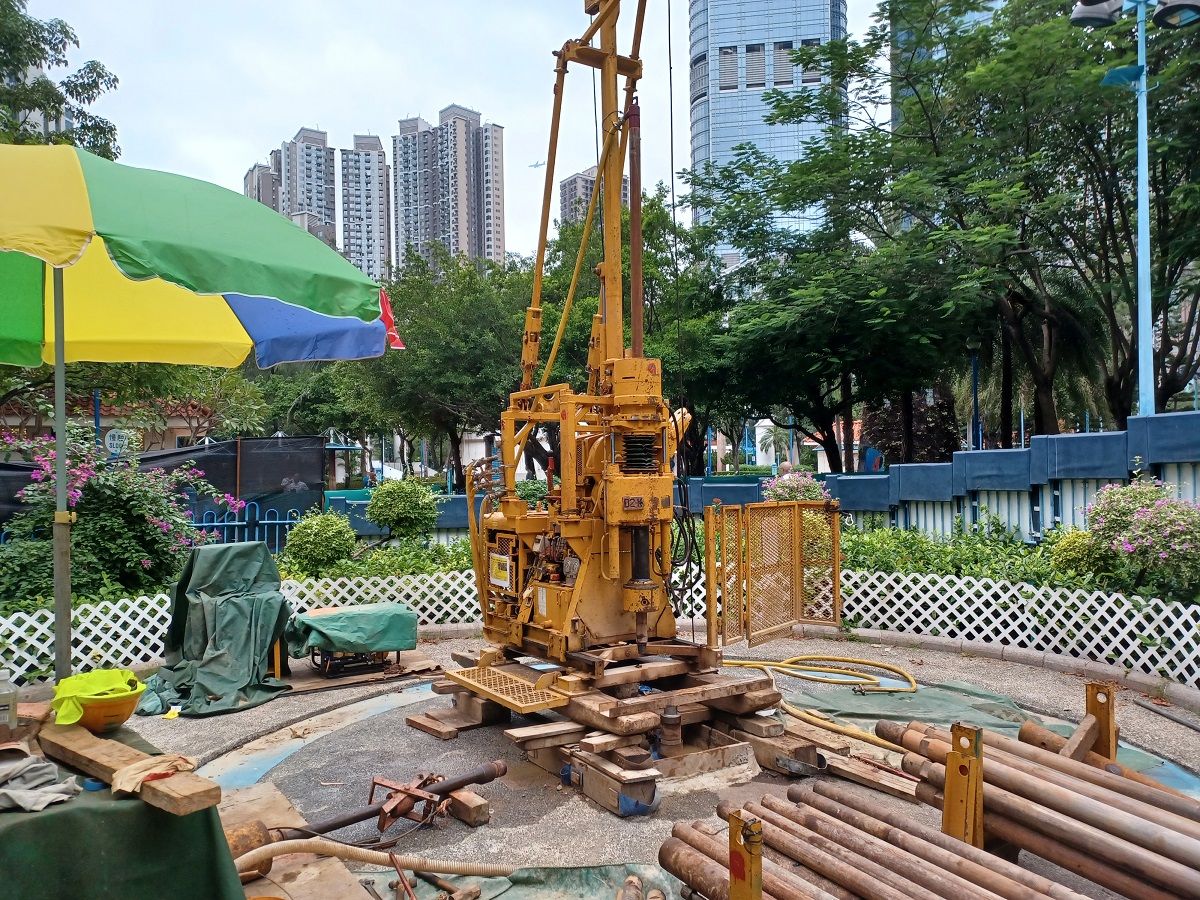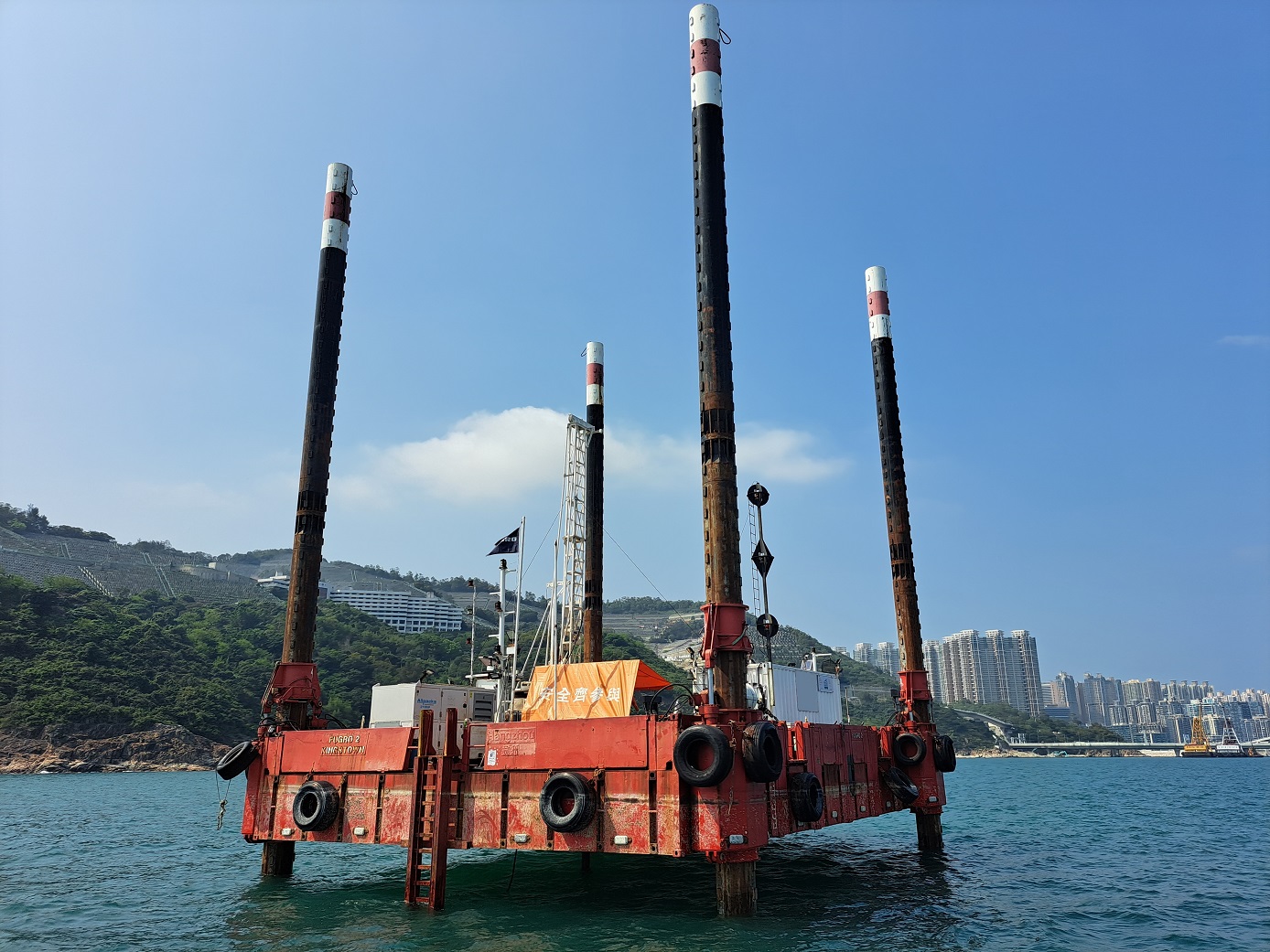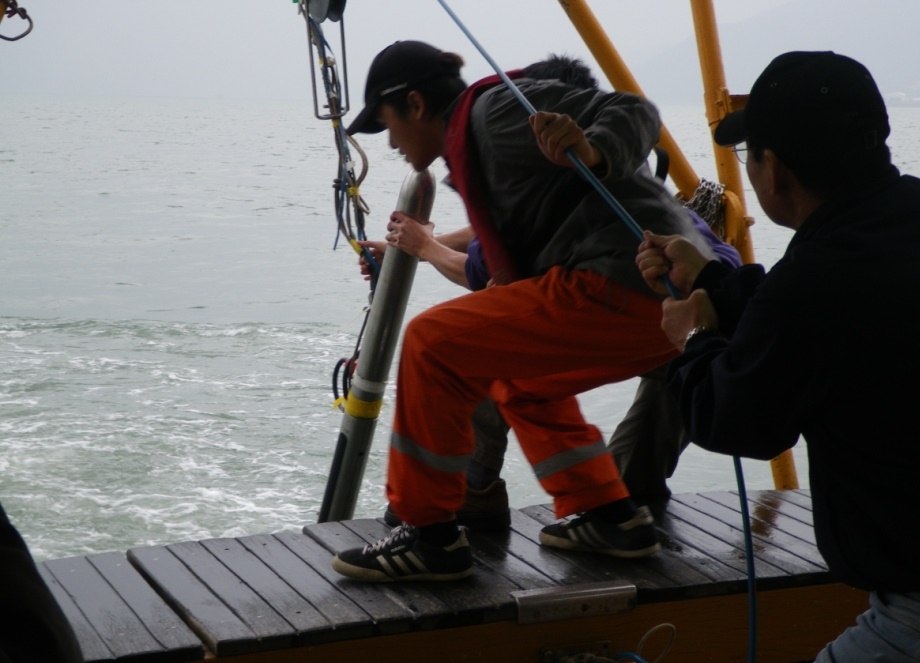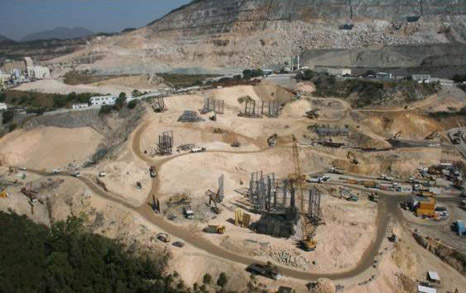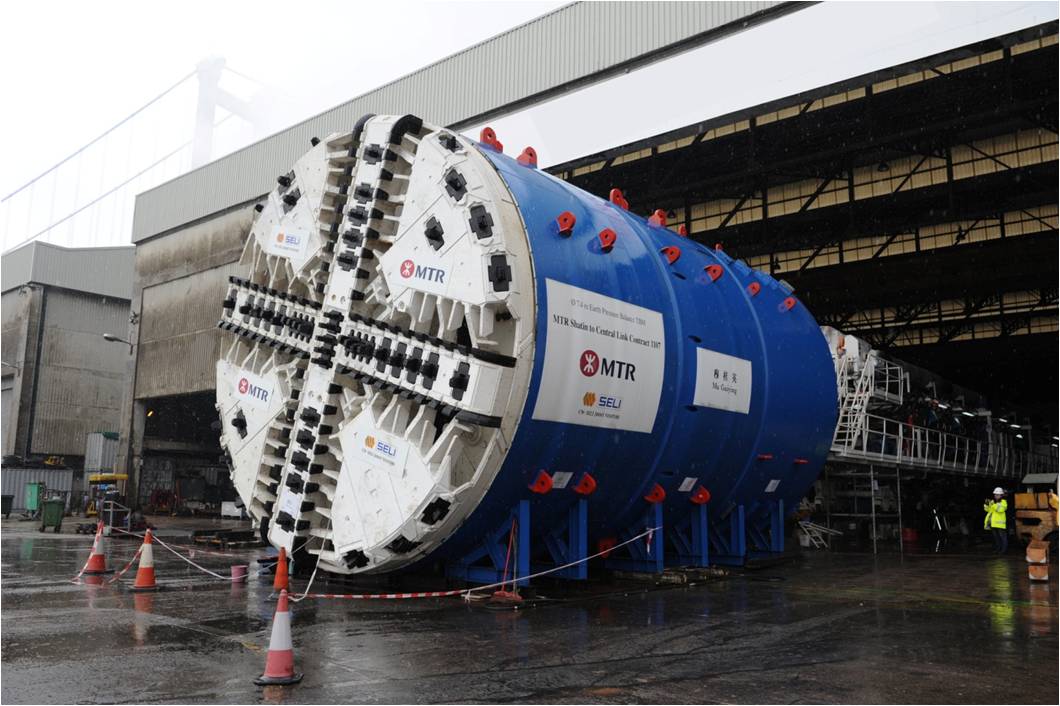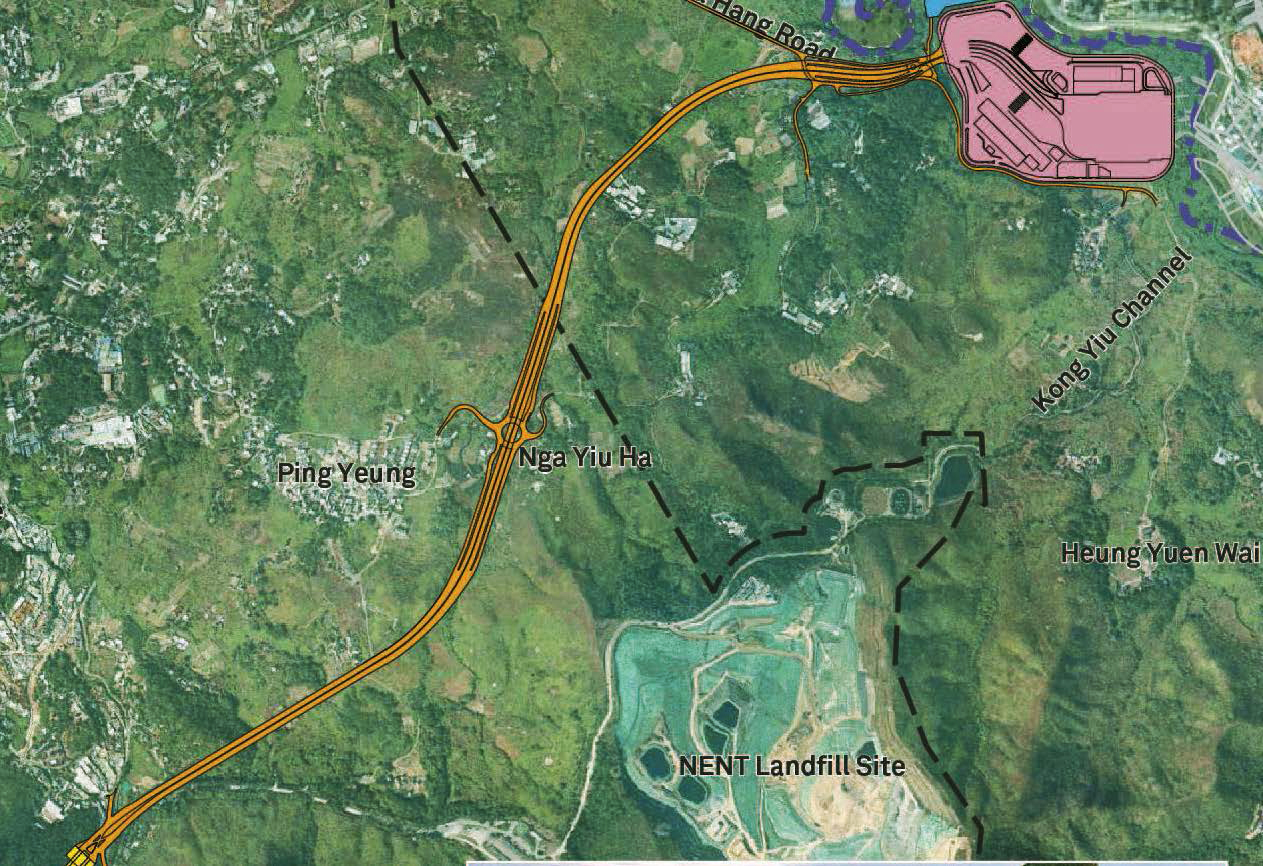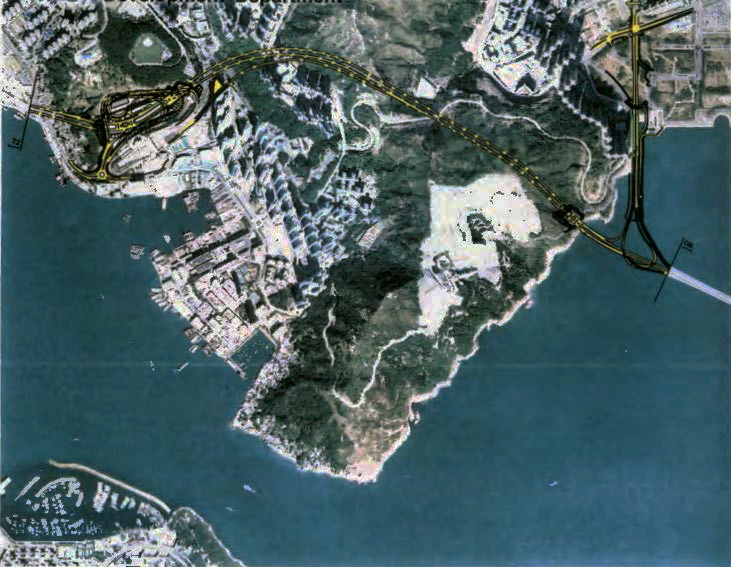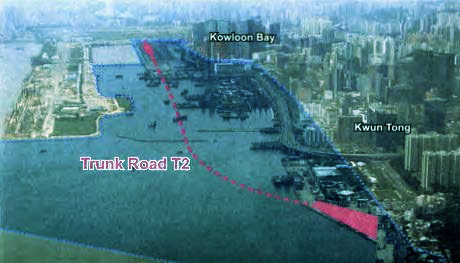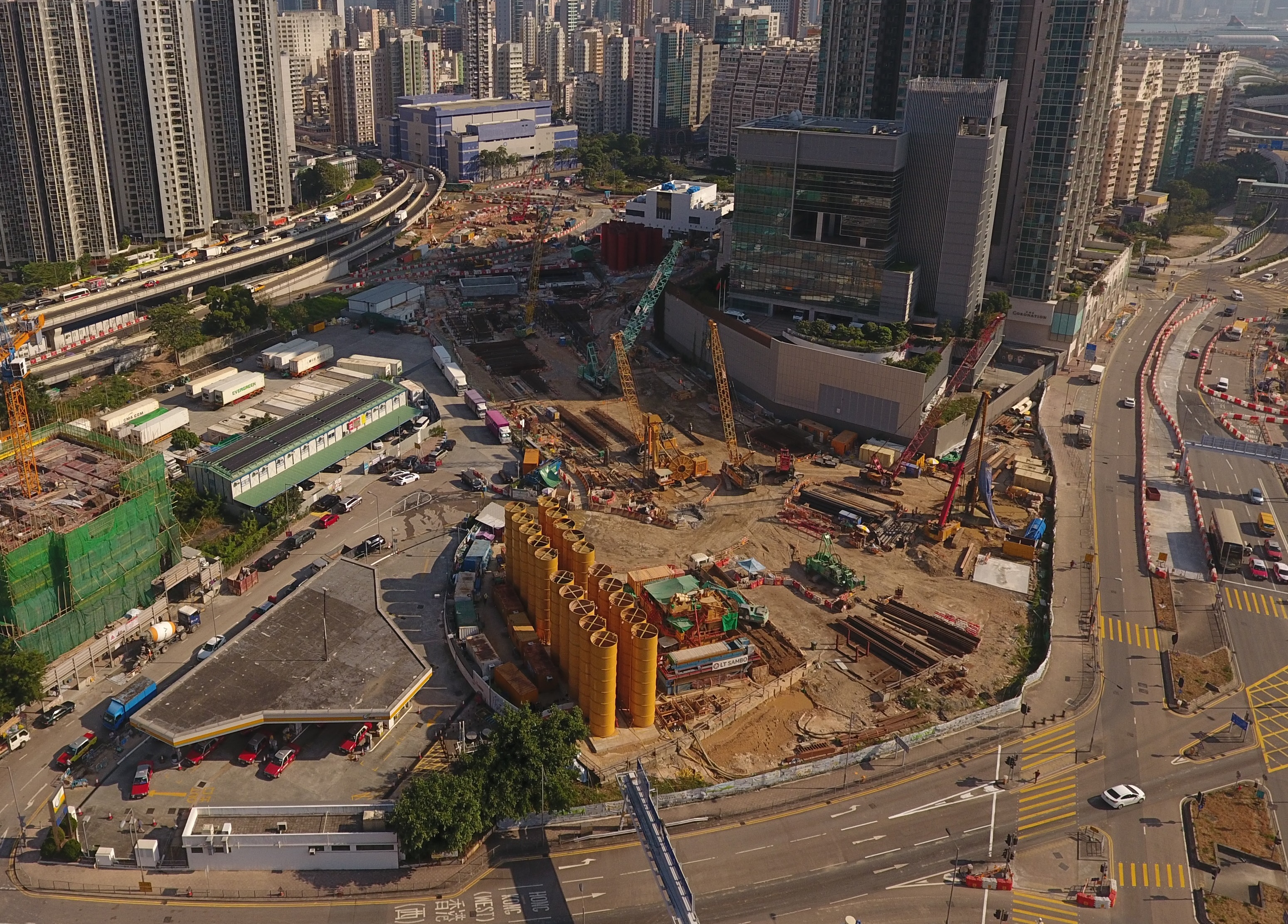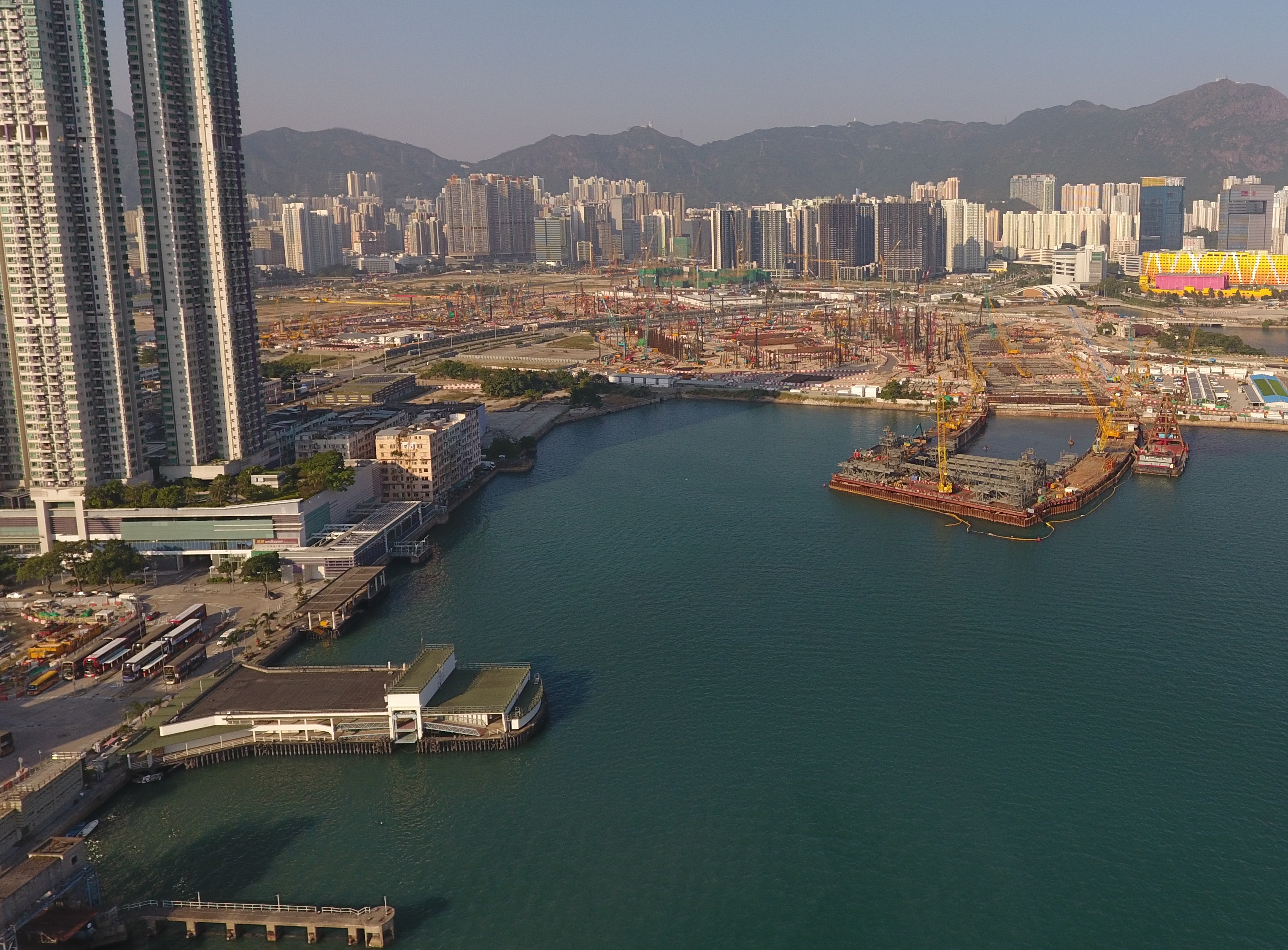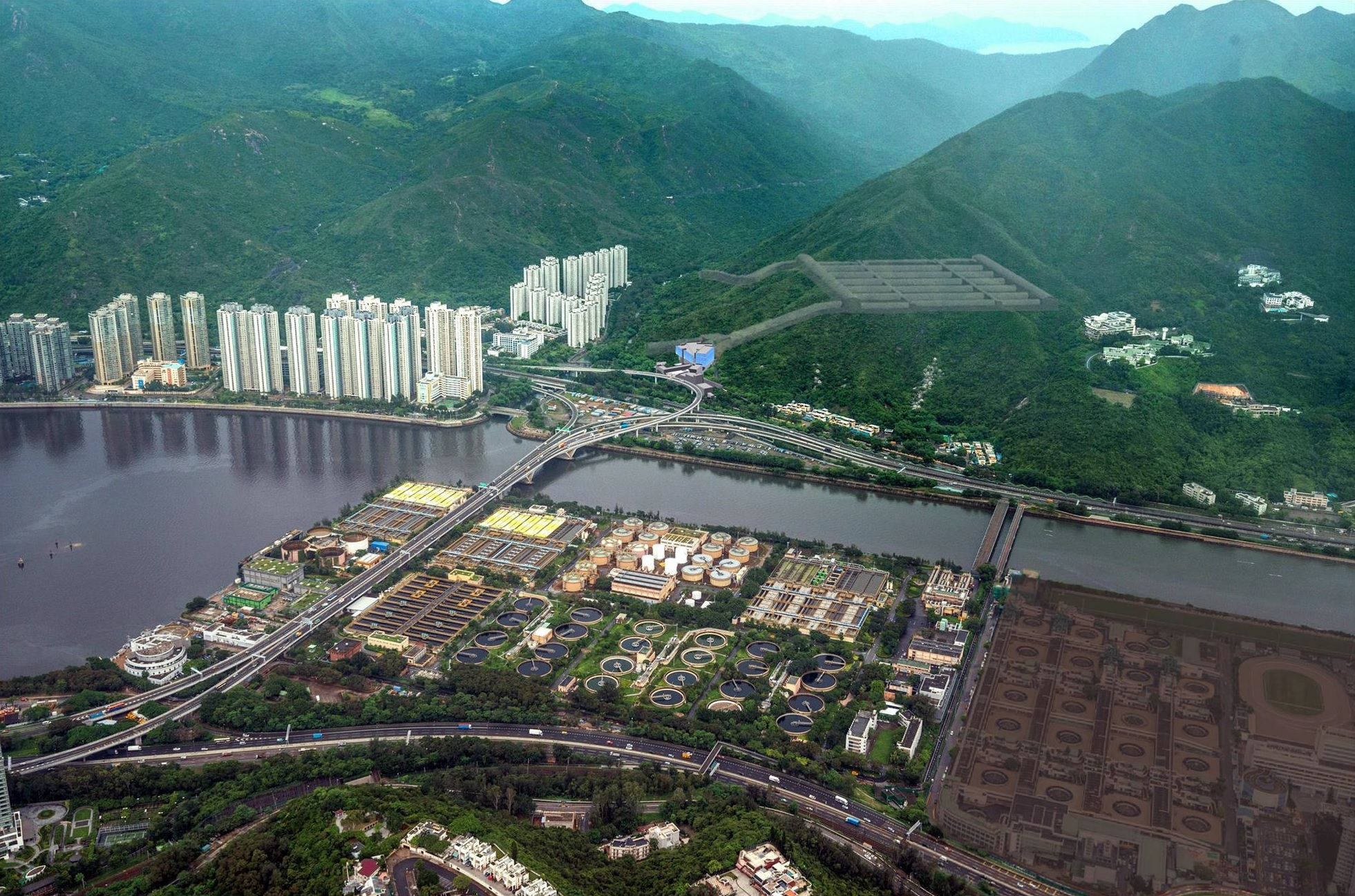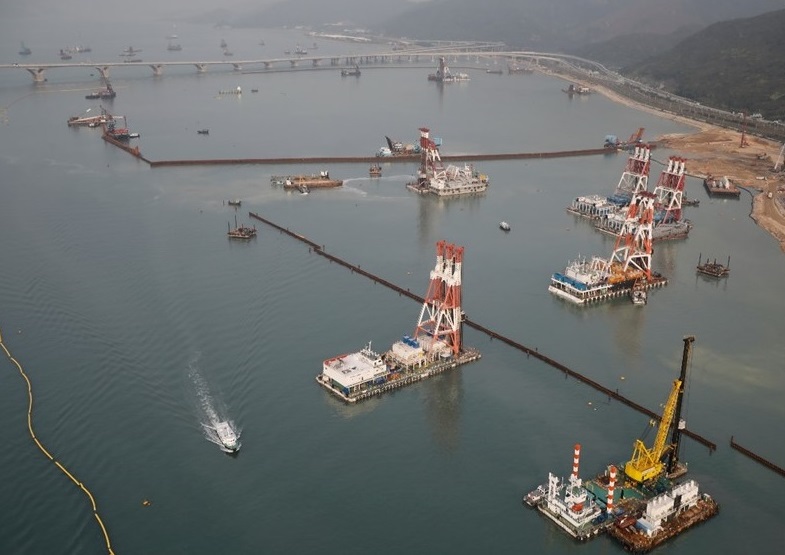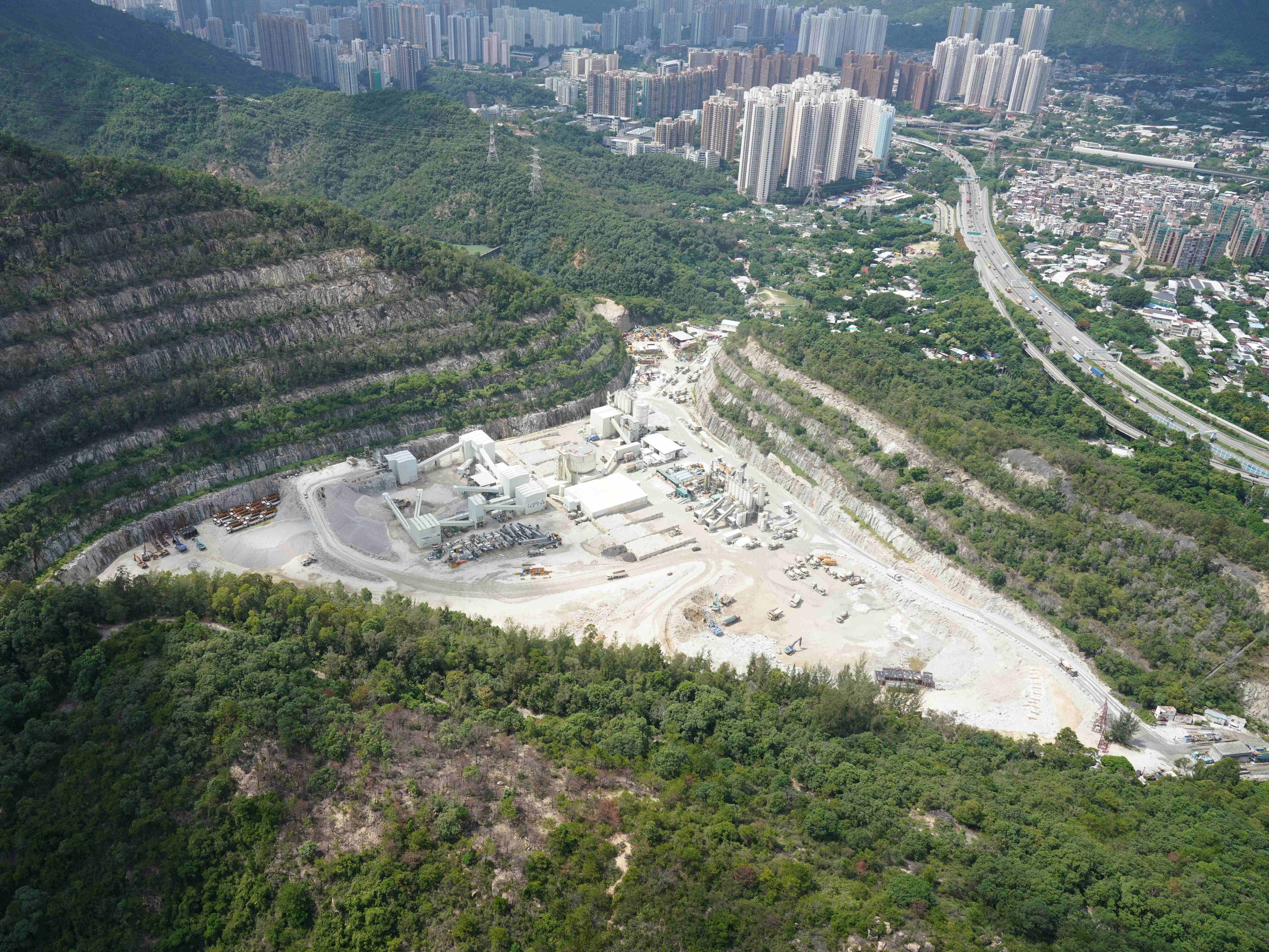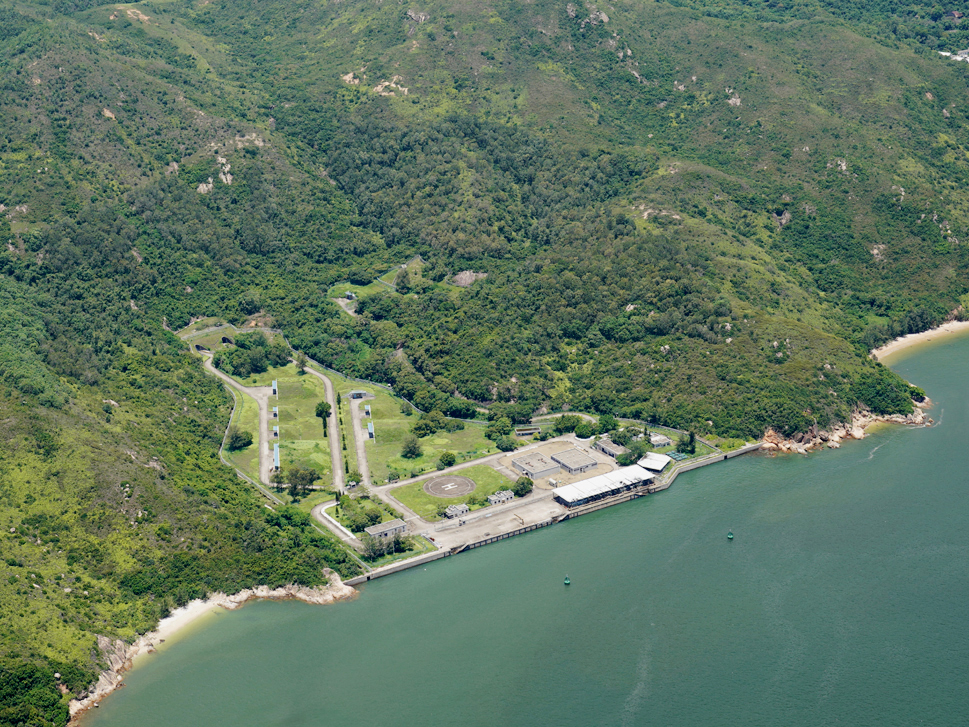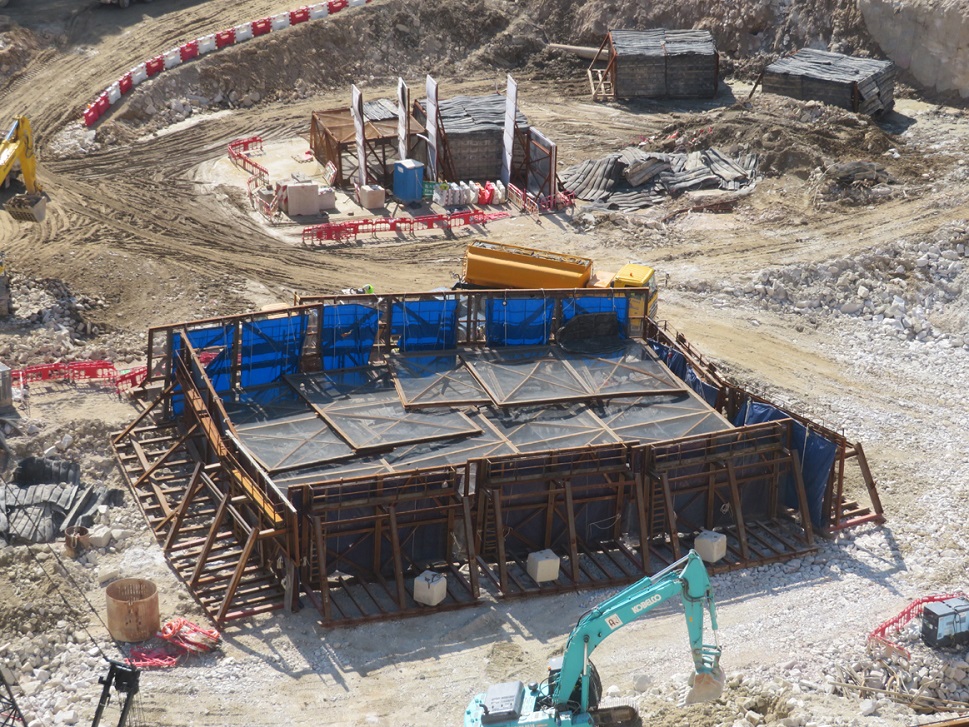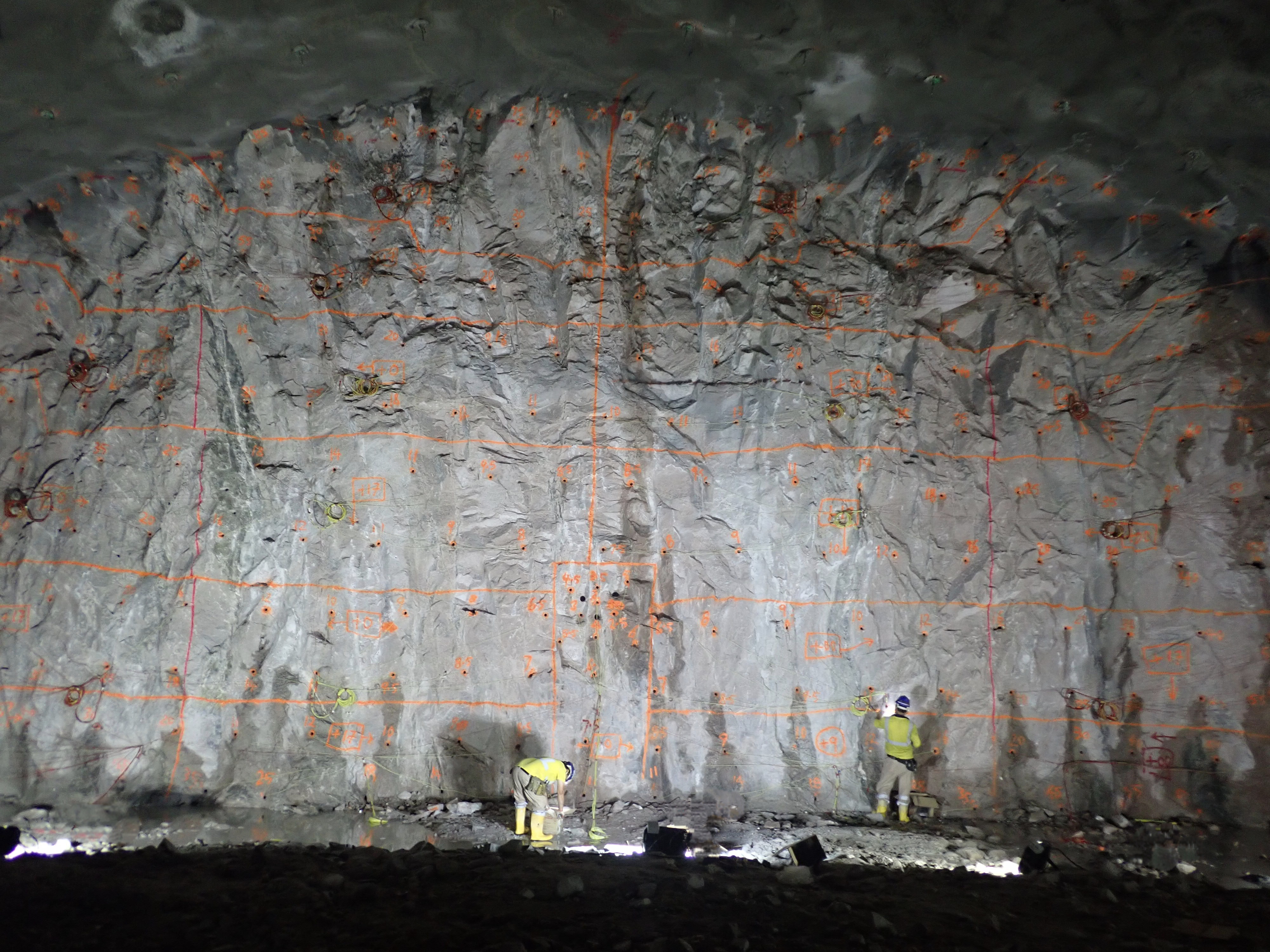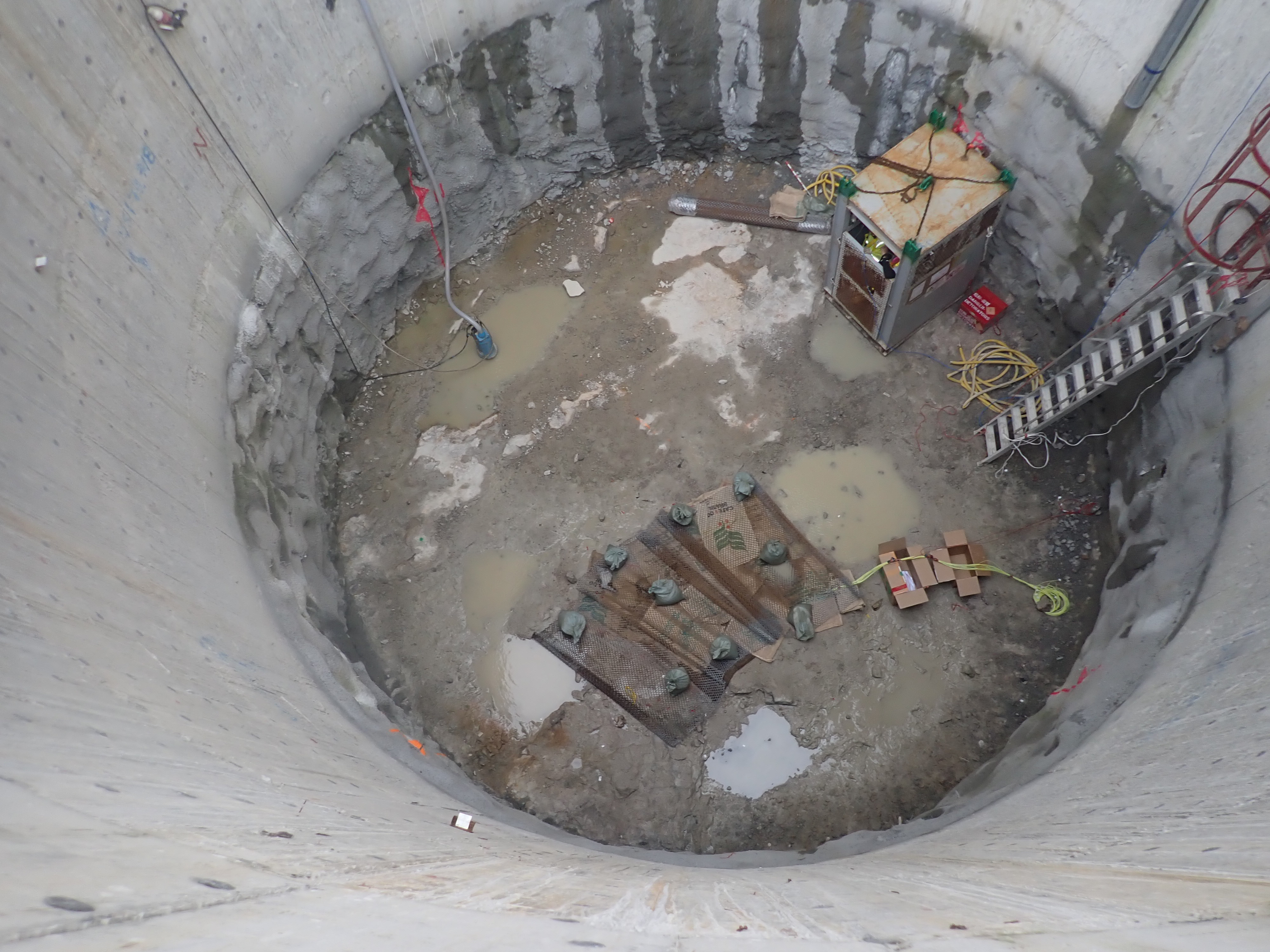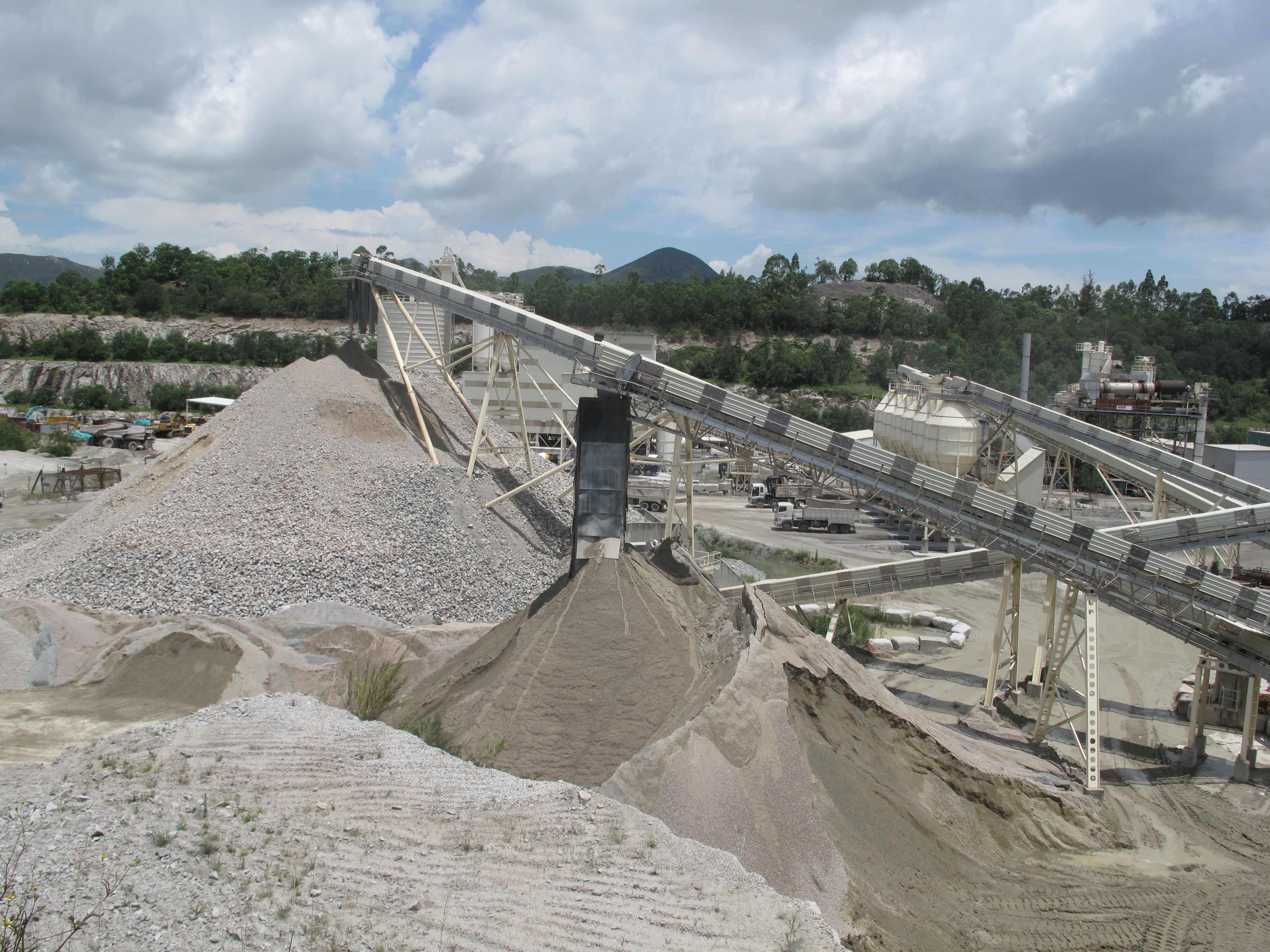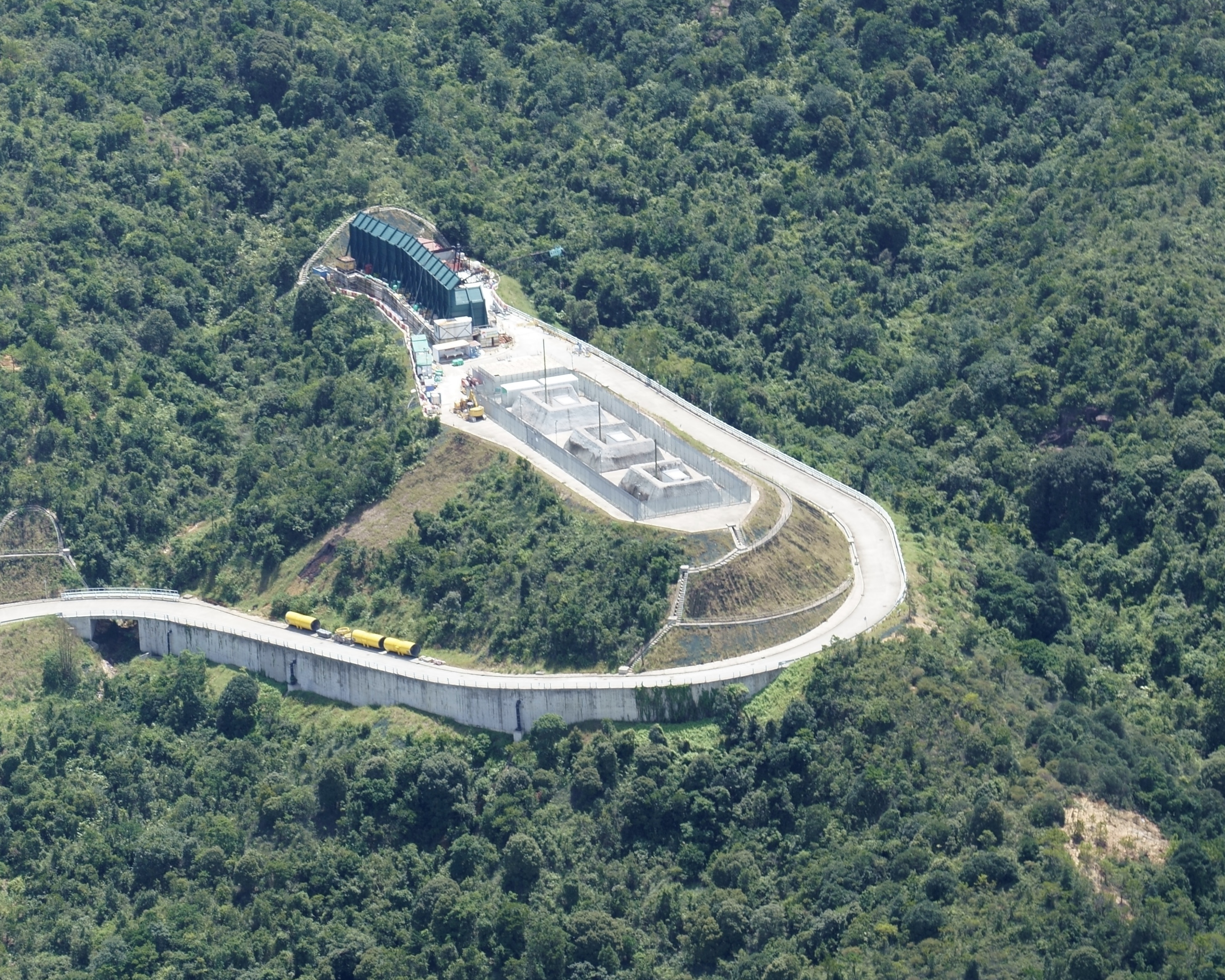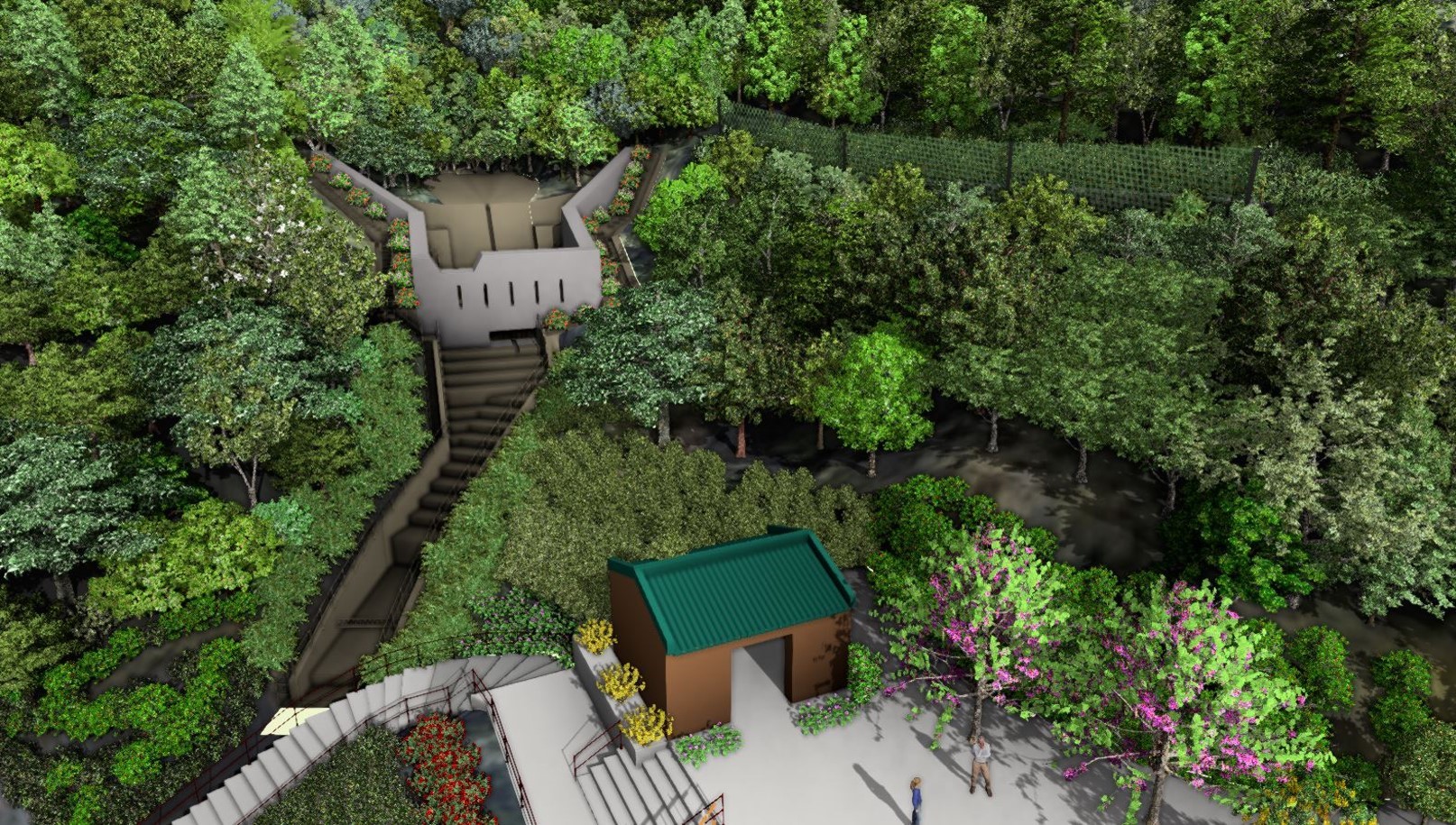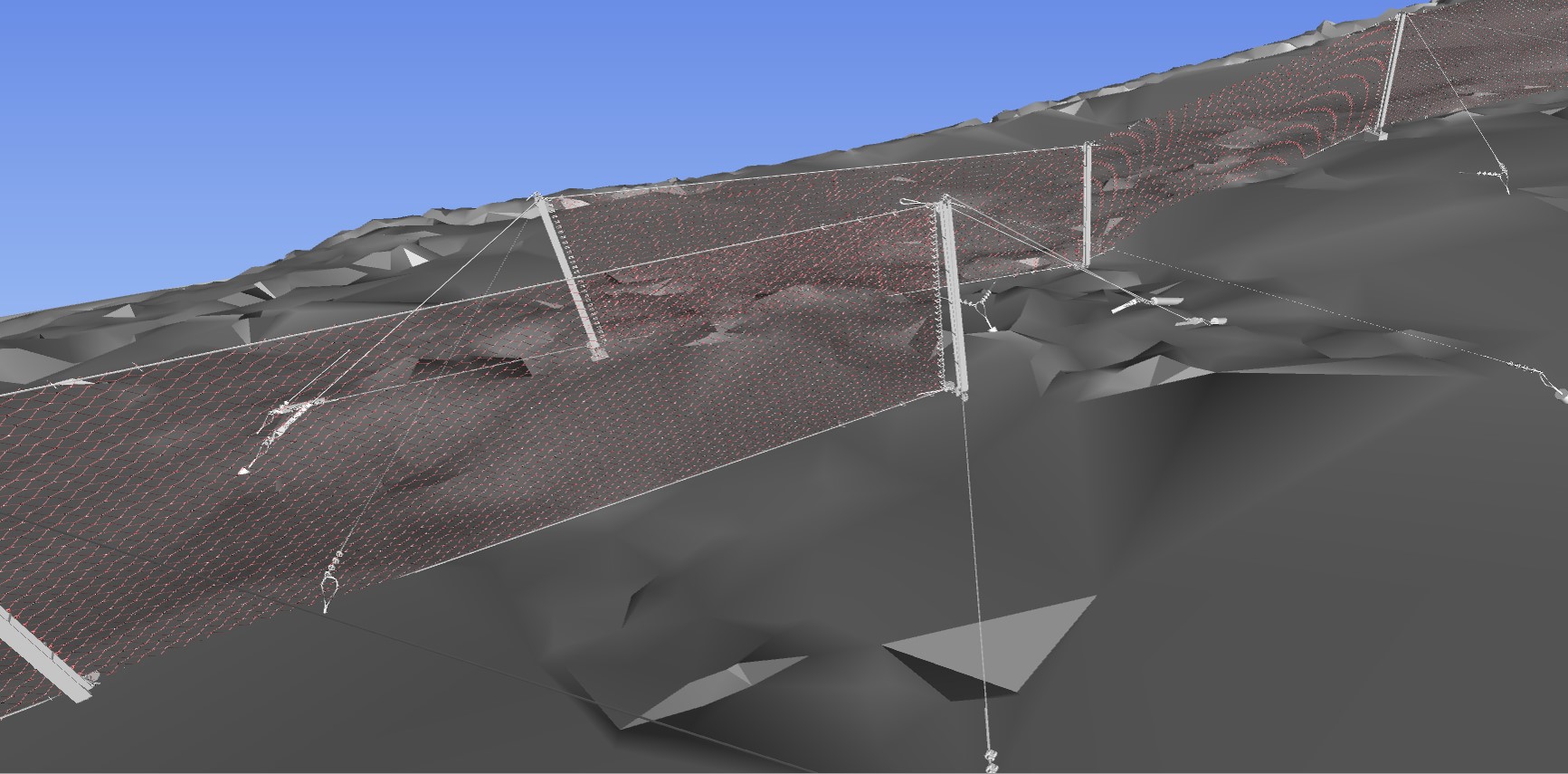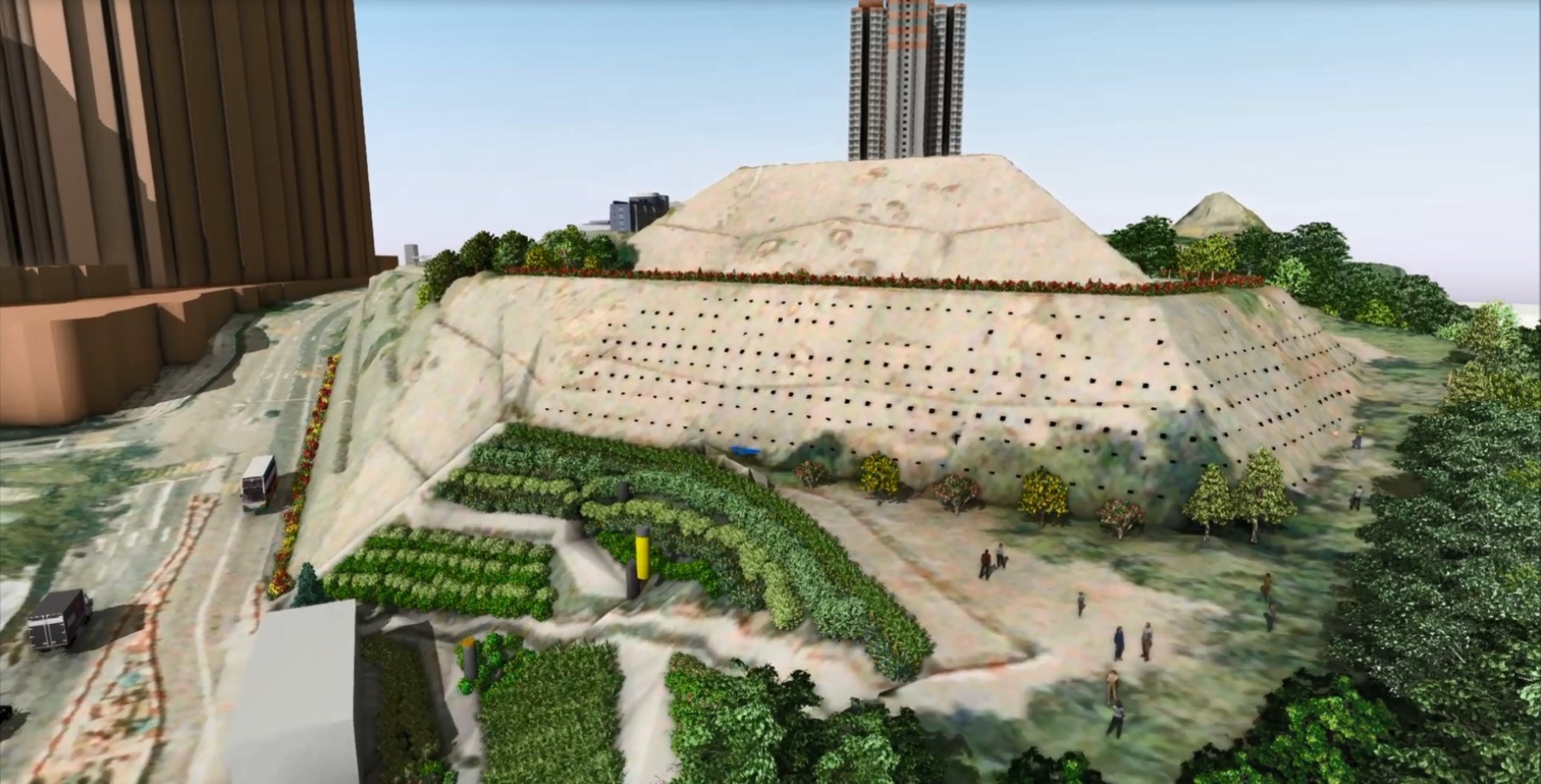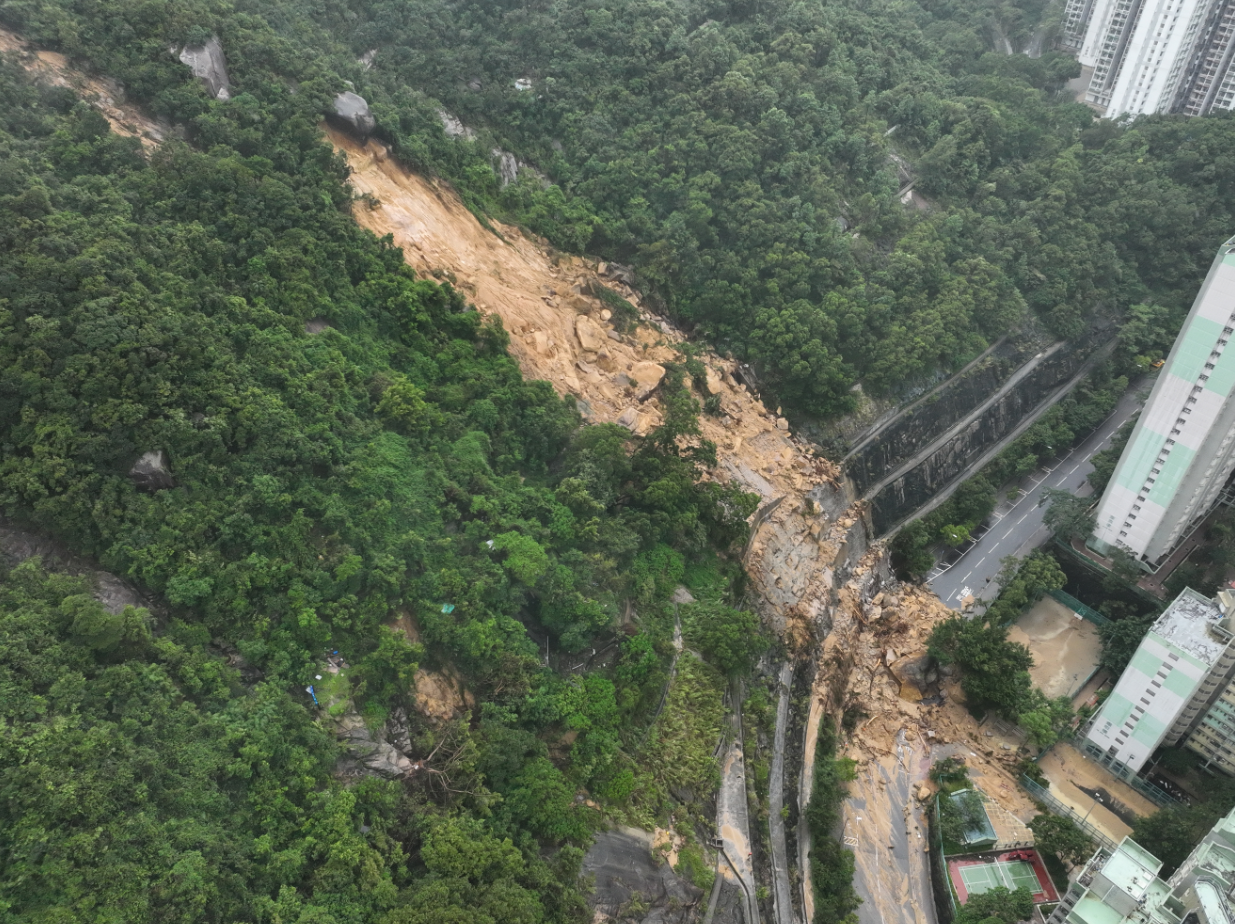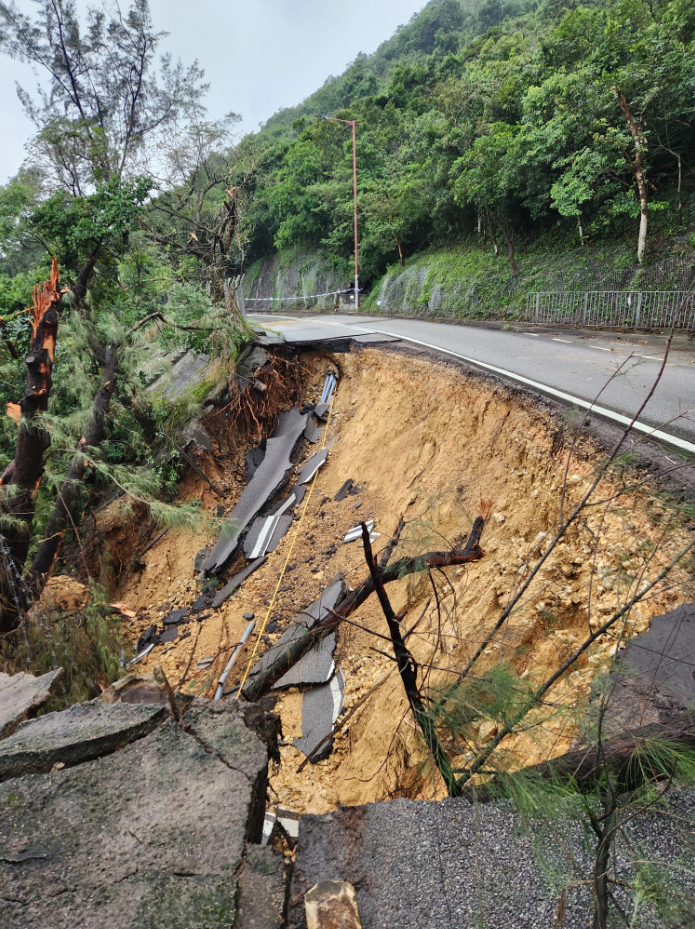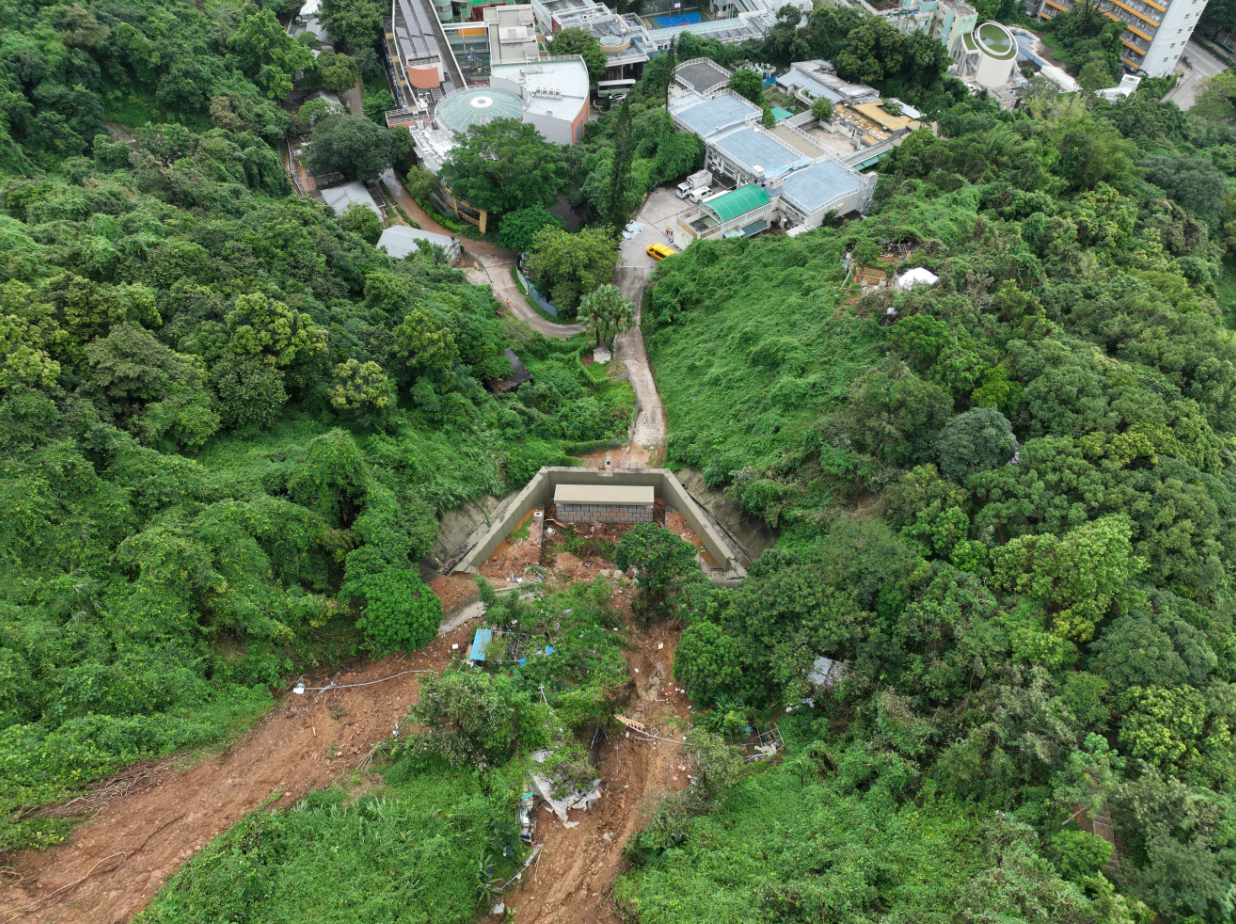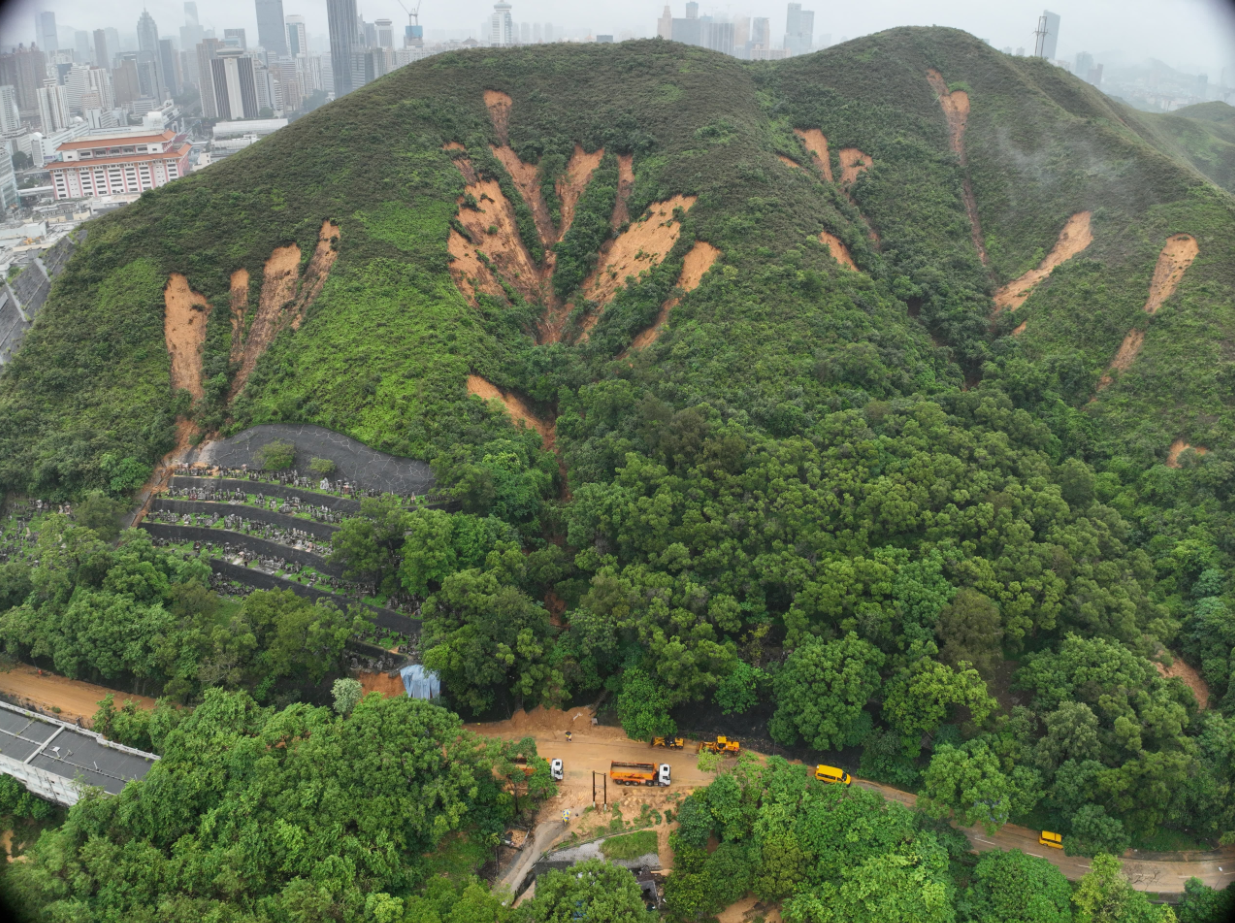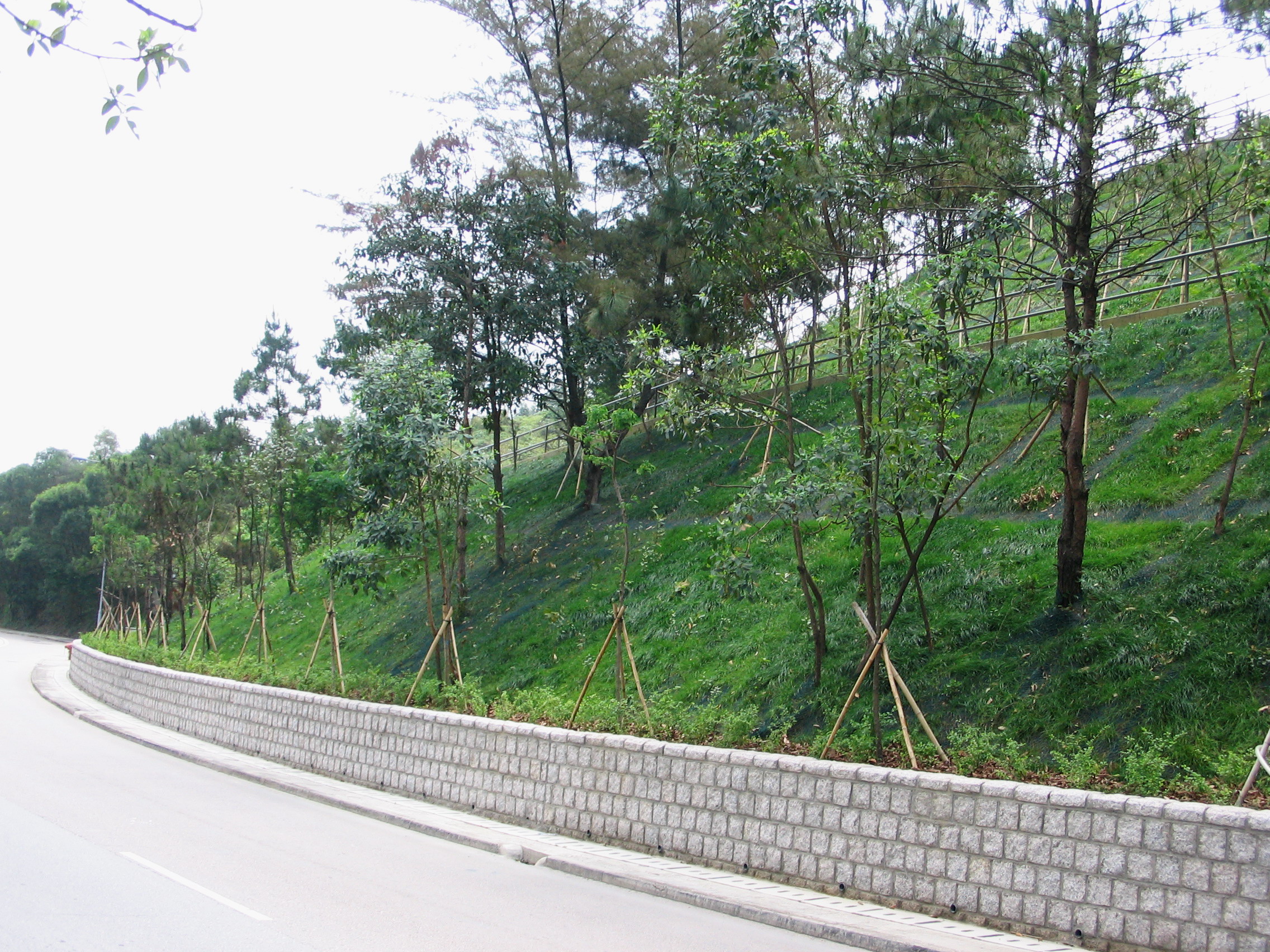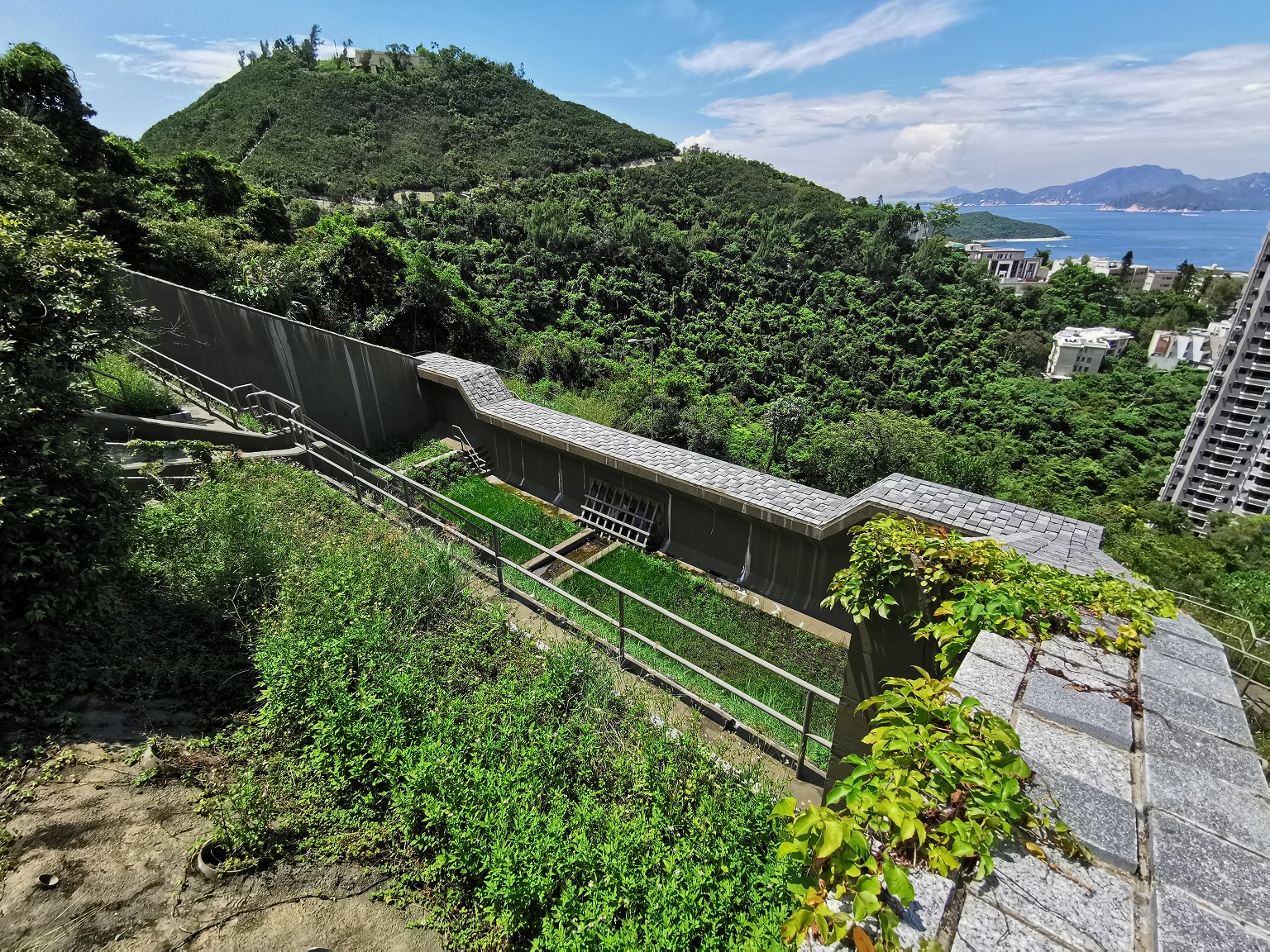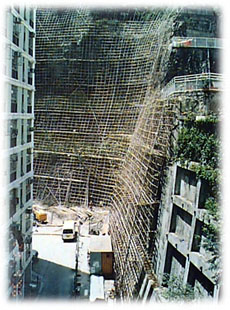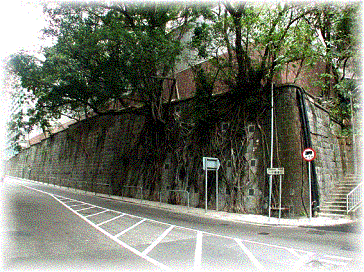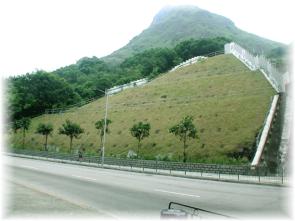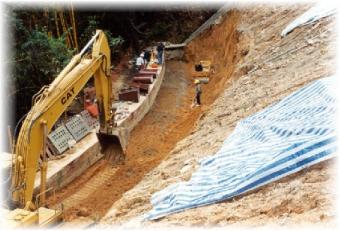The Geotechnical Engineering Office
The Geotechnical Engineering Office (GEO) is responsible for a wide range of geotechnical engineering activities related to the safe and economic utilization and development of land. It is one of six constituent offices of the Civil Engineering and Development Department of the Government of the Hong Kong Special Administrative Region.
The GEO is under the direction of the Head of the GEO and is divided into the Island Branch, Mainland Branch, Planning and Testing Branch and Landslip Preventive Measures Branch, each under the direction of a Deputy Head. The operational unit is the Division, of which there are eleven, each headed by a Chief Geotechnical Engineer. Each Section under the Division is typically composed of one Senior Geotechnical Engineer and three or more Geotechnical Engineers together with supporting technical and clerical staff. The functions of the Divisions are described below:
Island Branch
Geotechnical Support for Government Projects
With dedicated teams of professional and technical staff, Geotechnical Projects Division provides geotechnical advisory services to works departments on feasibility studies, investigations, design and construction supervision for a wide range of Government projects. Major client departments include Drainage Services Department, Highways Department, and other Offices of Civil Engineering and Development Department. During the investigation and design stage of the projects, geotechnical assistance is provided on planning of ground investigation and laboratory testing, drafting of design memorandum, option assessment report and associated contract specifications, and carrying out the detailed design on geotechnical works such as, but not limited to, formation of slopes and retaining walls. During the construction stage, we provide construction reviews and qualified site supervision on the geotechnical works ensuring safe and satisfactory execution of the proposed design.
In addition, ad-hoc "clinic" advices are provided to Government departments such as Water Supplies Department, Architectural Services Department, Home Affairs Department, and Lands Department, at any stage of their projects to deal with geotechnical problems which may arise during the course of their projects.
The Division also provides advisory support to the Project Strategy and Governance Office (PSGO) of the Development Bureau according to DEVB TC(W) No. 3/2018 on Enhancing Cost Effectiveness of Geotechnical Works of Capital Works Projects. Assistance on cost assessment of site formation works are also provided to Lands Department upon requests for cases related to land sale and preliminary land premium assessment.
Implementation of Cavern Related Projects
Cavern related projects are to develop underground space for various uses and free up the occupied lands allowing for sustainable developments and environments. The Division provides assistance to the Development Bureau on implementing the policy for cavern development according to DEVB TC(W) No. 2/2024 on Rock Cavern Development. The GEO has previously completed a feasibility study of the long-term strategy for cavern development in Hong Kong and formulated a Cavern Master Plan to provide a broad strategic framework to guide and facilitate territory-wide cavern development in Hong Kong.
The Division currently undertakes an investigation, design and construction project for the Joint Cavern Development (JCD) at Anderson Road Quarry Site. This project is to construct caverns at the existing Anderson Road Quarry site housing the relocated Public Works Central Laboratory and the Government Records Service's Archives Centre, such that the land of the existing Government facilities could be considered for other use based on the latest town planning and community needs. A feasibility study on updating the current "Guide to Fire Safety Design for Caverns 1994" administered by the Division is also in progress.
Projects
- Study on Long-term Strategy for Cavern Development
- Pilot Planning and Engineering Study on Development of Selected Strategic Cavern Areas – Feasibility Study
- Joint Cavern Development at Anderson Road Quarry Site – Reprovisioning of Public Works Central Laboratory and Building of Government Records Service"s Archives Centre in Caverns – Investigation, Design and Construction
- Revitalization of Lin Ma Hang Lead Mine Caves – Investigation, Design and Construction
- Re-provisioning of Victoria Public Mortuary: Cavern Enhancement Works and Natural Terrain Hazard Mitigation Works - Investigation, Design and Construction
- Study on Updating the Guide to Fire Safety Design for Caverns – Feasibility Study
For further information of the services of Geotechnical Projects Division, please contact Chief Geotechnical Engineer/Geotechnical Projects at anthonycpchan@cedd.gov.hk or telephone 2762 5300.
The Island Division is responsible for geotechnical control of all building developments and civil engineering works on Hong Kong Island. One of the recent projects that requires high professional and technical inputs of the Division is the construction of Central-Wan Chai Bypass (CWB) mined tunnel underneath ex-Wan Chai Public Cargo Working Areas, the Cross Harbour Tunnel (CHT) approach section and Causeway Bay Typhoon Shelter. The CWB mined tunnel consists of three closely spaced road tunnels: the 3-lane Westbound (WB) and Eastbound (EB) tunnels and the 2-lane Slip Road 8 (SR8) tunnel. The mined tunnel is about 11 m high, 153 m long and has a combined span of approximately 50 m. The geotechnical works of the project comprise construction of a "two-pass lining" for the mined tunnel. The first pass temporary tunnel supports are installed concurrently with the multiple headings for the large span tunnel excavation, and the second pass permanent undrained tunnel linings of cast-in-place reinforcement concrete are installed subsequent to the completion of excavation.
Protection measures for tunneling beneath the CHT structure are provided prior to excavation. Other major geotechnical works of the project include temporary reclamation and construction of cut and cover tunnels to depths over 40 m at the east and west of the mined tunnel.
Other major projects with substantial geotechnical input from Island Division include:
- Public Housing Development at Pok Fu Lam South
- Public Housing Development at Ka Wai Man Road and Ex-Mount Davis Cottage Area, Kennedy Town
- Airport Railway Extended Overrun Tunnel
- Ocean Park Redevelopment Project
- Shatin-to-Central Link of MTR
- South Island Line of MTR
In addition to the above, this division is responsible for carrying out slope maintenance audit to assist maintenance departments to improve their performance in discharging their slope maintenance responsibility. It also manages the system for certification of permanent prestressed ground anchors used in Hong Kong.
If you wish to obtain more information about the work of Island Division or have comments relating to our services, please contact Chief Geotechnical Engineer/Island :
Tel.: (852) 2762 5266
Fax.: (852) 2714 0214
Email: anthonychuang@cedd.gov.hk
The Slope Safety Division consists of five sections, namely, two Information Technology Sections, Community Advice and Education Section, Public Information Unit and Safety Screening Section.
The Information Technology Sections are responsible for operating the GEO automatic raingauge system and overseeings the development of a number of Geographic Information System (GIS) and Information Technology (IT) projects to enhance GEO's services.
The Community Advice and Education (CAE) Section has two major functions. The community advisory function is undertaken by the Community Advisory Unit (CAU). The CAU provides information and advisory services to the community through seminars and talks, roving "Meet-the-Public" sessions and discussions with private slope owners particularly on issues related to Dangerous Hillside Orders and slope maintenance works. The public can contact CAU at 2760 5800 or (cau@cedd.gov.hk) for assistance and advice.
The educational function of CAE primarily involves the running of a public education and publicity campaign on slope safety, targeting the general public, in particular students and private slope owners. The purpose is to promulgate the importance of slope maintenance and educate the public on personal precautionary measures to be taken during heavy rainstorms. Messages are conveyed through various means such as TV-APIs, radio, press and promotional materials including leaflets and posters, etc. The campaign also includes activities such as School Ambassador Programme, guided tours to Po Shan Drainage Tunnel – Landslide Sci-tech Chamber, exhibitions, seminars and competitions.
The Public Information Unit (PIU) deals with enquiries from the media and the general public related to the policy and work on slope safety and other activities of the GEO. The PIU also works with the Secretariat Press Office of the Development Bureau to disseminate timely information to the media. From time to time, the PIU coordinates visits to the GEO by LegCo members, academics, and overseas and local visitors to brief them on slope safety issues.
The Safety Screening Section (SS) manages a number of consultants to carry out geotechnical studies on private man-made slopes to identify potential substandard features for follow-up actions, such as the issue of Advisory Letters or Dangerous Hillside Orders (by Buildings Department upon GEO's recommendation) to the private owners. The studies proceed generally according to the ranked priority order but features are also grouped and studied on an area basis. The Safety Screening Section also responsible for updating and maintenance of the Catalogue of Slopes. The slope information in the Catalogue is stored in a computerized Slope Information System (SIS). The SIS permits fast on-line examination and analysis of the spatial relation between slopes and surrounding topography. Members of the public can access slope and related information from the SIS through the Hong Kong Slope Safety Website, https://hkss.cedd.gov.hk.
For further information of the work of the Slope Safety Division, please contact Chief Geotechnical Engineer/Slope Safety:
Tel.: (852) 2762 5691
Fax.: (852) 2762 2389
Email: jeffreycfwong@cedd.gov.hk
Planning and Testing Branch
The Planning and Development Division consists of six Sections, namely the Hong Kong Geological Survey Section, Earth Section, Engineering Geology Section, Planning and Terrain Evaluation Section, Slopes Section 1 and Slopes Section 2. They are responsible for producing and updating geotechnical standards and technical guidelines on the basis of applied research and development work in the areas of the geology of Hong Kong and its engineering implications, remote sensing techniques, slope and retaining wall design, natural terrain landslide hazards, rainfall analysis and its relationship with landslide occurrence, quantitative risk analysis, seismicity, foundation, and instrumentation and sensing technology. In addition, the Division provides geological services to the Government and the general public and supports various government departments on land planning applications and development projects with respect to potential geological constraints and landslide and boulder hazards from natural terrain. The Division also administers training and career development for graduate geotechnical engineers and engineering geologists in the GEO. In particular,
- The Hong Kong Geological Survey Section is responsible for geological mapping, geological reporting, the archiving of geological information, and the provision of geological advice to the Government, the private sector and the general public. Since its establishment in 1982, the Section has sought to continually update, apply, and promulgate information about the geology of Hong Kong. Up until 2023, the Section has published 54 geological maps on a variety of scales and 14 accompanying geological memoirs. The list of publications by the Section can be found here.
- The Engineering Geology Section is responsible for providing engineering geological input to technical studies and undertaking technical development work related to natural terrain risk management (including landslide and boulder hazards) such as prioritisation of natural hillside catchments for inclusion in the Landslip Prevention and Mitigation Programme, review of natural terrain hazard submissions and maintenance of records of disused tunnels in Hong Kong.
- The Planning and Terrain Evaluation Section is involved in the identification of historical natural terrain landslides and delineation and cataloguing of vulnerable hillside catchments as well as the application of remote sensing techniques, such as optical satellite imagery, airborne Light Detection and Ranging, synthetic aperture radar, unmanned aerial vehicle and mobile laser scanning, to assist acquisition of various geospatial data for engineering geological studies. The Section is also responsible for managing the Civil Engineering Library (including the Geotechnical Information Unit) and the Aerial Photograph Library.
Earth Section, Slopes Section 1 and Slopes Section 2 are actively undertaking applied research and development work in the following major aspects:
- Develop and update guidelines in slope engineering, covering investigation, design, construction, monitoring and maintenance of man‑made slopes.
- Conduct technical studies to enhance the design and construction practice of landslip prevention and mitigation measures and the associated slope surface drainage system, as well as the landscape treatment of slopes.
- Undertake technical development work on the quantitative risk assessment for landslide risk management, assessment of natural terrain landslide debris mobility, and design of landslide debris‑resisting barriers.
- Enhance capabilities in landslide risk assessment during heavy rainstorms, including analysis of relationship between rainfall and landslides, frequency analysis of extreme rainfall and application of machine learning in landslide prediction
- Carry out technical studies regarding seismic effects on slope stability.
- Operate the Landslip Warning System jointly with the Hong Kong Observatory.
- Develop applications of sensing technology, such as the smart barrier system for debris‑resisting barriers.
The research and development work is conducted both in-house and in collaboration with universities, research institutes, local professional bodies, consultants and contractors. The Division promulgates technical guidance with publications and reports, which can be downloaded from the GEO Publications website or purchased from the Publications Sales Unit of the Information Services Department.
If you wish to know more about the work of Planning and Development Division or have questions relating to our services, please contact Chief Geotechnical Engineer/Planning and Development:Tel.: (852) 2762 5369
Fax.: (852) 2714 0247
Email: florenceko@cedd.gov.hk
Mainland Branch
Mainland East Division is responsible for geotechnical control of all building developments and civil engineering works in Kowloon and the eastern parts of the New Territories. The Division is currently undertaking geotechnical control on the following major projects:
- Development at Anderson Road
- Shatin to Central Link
- Liantang / Heung Yuen Wai Boundary Control Point
- Tseung Kwan O - Lam Tin Tunnel
- Kai Tak Development - Trunk Road T2
- Central Kowloon Route
- Relocation of Sha Tin Sewage Treatment Works to Caverns
The Division exercises special geotechnical control over foundation design and construction for developments in Ma On Shan, an area which is underlain by marble. Large cavities are present within the marble in some locations.
We also manage the GEO's landslide emergency service. As part of this service, GEO provides 24-hour, year-round emergency advice to Government departments, on action to be taken to safeguard the public following landslide or rockfall incidents. When a Landslip Warning or a Tropical Cyclone Warning Signal No.8 or higher is issued by the Hong Kong Observatory, the GEO Emergency Control Centre will be mobilised.
If you wish to obtain more information about the work of Mainland East Division or have comments relating to our services, please contact Chief Geotechnical Engineer/Mainland East.
Telephone: (852) 2762 5230
Fax: (852) 2714 0245
E-mail address: wailinchan@cedd.gov.hk
The Mainland West Division is responsible for geotechnical control of all building development and civil engineering works in the western part of Kowloon and the New Territories, including the outlying islands. This includes auditing foundation proposals for developments in Yuen Long (where marble with cavities exists beneath the superficial deposits). This Division has currently taken up two studies, namely "Technical Study on Reclamation Design and Construction Practices in Hong Kong", and "Regional Geological Study of Northern New Territories". This Division also carries out inspection of landslip incidents, coordinates matters relating to the non-development clearance of squatter structures on slope safety grounds, and provides geotechnical advice to other Government Departments.
You are welcome to send comments and suggestions to Chief Geotechnical Engineer/Mainland West.
Telephone: (852) 2762 5205
Fax: (852) 2194 0165
E-mail address: erichysze@cedd.gov.hk
The Director of Civil Engineering and Development is also the Commissioner of Mines (CoM). The CoM is a specified Authority under the Dangerous Goods Ordinance Cap 295 (DGO) and the Mining Ordinance (Cap 285), and related subsidiary legislation. Mines Division exercises powers vested in the CoM and performs duties imposed on the CoM under the legislation.
The main responsibilities of Mines Division include the regulatory control of the manufacture, storage, conveyance and use of Schedule 1 Dangerous Goods under the Dangerous Goods Ordinance (Cap 295) and mining operations under the Mining Ordinance (Cap 285), and the safe operation of quarries under the Quarries (Safety) Regulations (Cap 59F). It is also responsible for the planning and management of quarrying contracts, and related quarry studies.
Under the Mines (Safety) Regulations (Cap 285B), the Superintendent of Mines, who is also the Chief Geotechnical Engineer/Mines, is responsible for issuing Mine Blasting Certificates which permit shot firers to use explosives for blasting.
In relation to explosives, Mines Division:
- audits blasting assessment reports and method statements for blasting projects, and is responsible for issuing Blasting and Storage Permits and inspecting blast sites and temporary explosives stores
- manages the Government Explosives Depots, which provide storage facilities for imported explosives
- regulates the control of storage and conveyance of non blasting explosives, such as those used for fireworks displays, life saving, scientific research, fire fighting, sporting arms, and industrial fastening tools
- regulates the control of the conveyance of blasting explosives, including delivery from Government Explosives Depots to blasting sites, and supervises the security of explosives during delivery to the place of storage or use
- manages two purpose-built vessels and a fleet of trucks for the delivery of explosives
- provides technical support on matters relating to the discharge of fireworks on land and at sea to the Secretary for Home Affairs and Director of Marine, respectively, who are the authorities for these matters under the Dangerous Goods Ordinance.
Click here for information on the import of explosives into Hong Kong.
In relation to quarries, Mines Division is responsible for the management and rehabilitation of rock quarries in Hong Kong. Currently, it manages a quarry at Lam Tei (Tuen Mun). Lam Tei Quarry supplies aggregates and rock products to the local construction industry. It also processes surplus rock generated from local construction projects to produce aggregates. As an on-going exercise, the division carries out feasibility studies for Hong Kong's future aggregates and rock products supplies, including searching for potential quarry sites.
The year 2021 marks the 70th anniversary of the Mines Division under the Civil Engineering and Development Department (CEDD).
Click here to read the "70th Anniversary Commemorative Booklet of the Mines Division" (PDF version)
If you wish to obtain more information on the work of Mines Division or have comments relating to our services, please contact Chief Geotechnical Engineer/Mines.
Telephone: (852) 3842 7220
Fax: (852) 2714 0193
E-mail address: cge_mines@cedd.gov.hk
Landslip Preventive Measures Branch
This Division is responsible for the following areas of work:
- Management of the programme on landslip prevention and mitigation studies and works (implemented under Landslip Preventive Measures Programme until 2010 and under Landslip Prevention and Mitigation Programme since 2010). The Division is responsible for exercising overall coordination and control of projects on landslip prevention and mitigation studies and works, formulating the strategy and master programme, together with monitoring the progress and expenditure of the various projects. The Division manages the selection and packaging of slopes and natural hillside catchments for landslip prevention and mitigation action. It also maintains and updates the Landslip Preventive Measures Information System (LPMIS), which contains key data on slopes and natural hillside catchments included in the projects. Updated statistics on the progress of landslip prevention and mitigation studies and works are published on a regular basis.
- Coordination with other government slope maintenance departments with regard to the interfacing of the GEO's projects on landslip prevention and mitigation and the Preventive Maintenance Programmes. The Division provides secretariat support to the LPM Committee which is responsible for the endorsing man-made slope features and natural hillside catchments selected for landslip prevention and mitigation action and the Preventive Maintenance Programmes.
- Selection and management of consultancies. The Division is responsible for the selection and engagement of consultants for landslip prevention and mitigation studies and works, overseeing detailed studies and works contracts, providing project management input to the related activities and managing the Consultancy Agreements.
Telephone: (852) 2760 5811
Facsimile: (852) 2624 4135
E-mail address: jonathanlau@cedd.gov.hk
The Landslip Preventive Measures Division 2 consists of two Design Sections, the Landslip Investigation Section and the Consultant Management Section.
- Under the Landslip Prevention and Mitigation (LPMit) Programme, the Division and its consultants carry out studies of government man-made slopes and natural hillside catchments to identify potential danger and the need for prevention and mitigation works. A risk-based priority ranking system will be used to select the most deserving man-made slopes and natural hillside catchments with known hazards for action under the LPMit Programme. The Division and its consultants will carry out the detailed design and implement the necessary landslip prevention and mitigation works for substandard man-made slopes and vulnerable natural hillside catchments.
- The landslip prevention and mitigation works designed in-house by the Design Sections are implemented through works contracts managed by the other Sections of the Landslip Preventive Measures Branch. The activities of the Design Sections include desk studies, aerial photograph interpretation, field mapping and ground investigation, stability analysis, debris mobility modelling, design of landslip prevention and mitigation works and provision of design advices during construction. Some of the man-made slopes and natural hillside catchments dealt with by the Division are implemented through consultants. The tasks carried out by these consultants, who are managed by the Consultant Management Section, include studies of man-made slopes and natural hillside catchments, design of landslip prevention and mitigation works, preparation of contract documents and supervision of construction. The duties of the Consultant Management Section include reviewing and monitoring of the progress of the landslip prevention and mitigation measures and related tasks under the consultancy agreement, expenditure control and coordination with other government departments. The progress of the geotechnical studies and landslip prevention and mitigation works carried out under the LPMit Programme are shown on the Quarterly Report prepared by the Landslip Preventive Measures Division 1.
- The Landslip Investigation Section, supported by its consultants, undertakes a systematic landslide investigation (LI) programme, which is a core component of the LPMit Programme. The principal objectives of the systematic LI programme are to identify and follow up on slopes in need of early attention to safeguard public safety, provide forensic evidence for landslides that involve subsequent coroner inquest, legal action or financial dispute, review the performance of the Government's slope safety system, identify areas for improvement in the slope safety system and slope engineering practice, and advance the understanding of the causes and mechanisms of landslides in Hong Kong so as to improve the reliability of landslide preventive or remedial works. The scope of the LI work includes examining all reported landslides and conducting in-depth studies of selected significant landslides to document the failure and relevant background information, establish the probable causes, and identify the necessary follow-up actions. The key findings of landslide studies and lessons learnt are given in the CEDD Website.
- The Landslip Preventive Measures Division 2 is responsible for developing and updating technical guidance for the design of slope upgrading works and natural terrain hazard mitigation measures under the LPMit Programme. In particular, the Division undertakes technical development work to enhance the design of flexible debris-resisting barriers. The Division is also committed to improving the quality and cost-effectiveness of landslip prevention and mitigation works. To this end, innovative design approaches, new materials and new techniques are adopted where appropriate.
- Apart from slope safety, we are concerned about the appearance of man-made slopes and natural hillside catchments. It is GEO's policy to make the man-made slopes upgraded under the LPMit Programme look as natural as possible through the use of soft and/or hard landscape treatment. For natural hillside catchments, the existing vegetation including trees and shrubs is preserved as far as practical during the construction of landslide risk mitigation measures. Soft and/or hard landscape treatments similar to those for man-made slopes would be provided for the risk mitigation measures as appropriate to minimize their visual impact and blend them with their surrounding environment.
- All consultants involved in LPMit projects are required under their terms of the consultancy agreements to provide necessary landscape input during the design and construction stages. GEO has been appointing landscape consultants to provide landscape input to the in-house projects. In addition, technical support on landscaping is available from the Landscape Division of CEDD Headquarters.
- To improve the technology in slope greening, we have been pursuing researches into the use of vegetation in landslip prevention and mitigation works and experimenting with new techniques of providing erosion control measures and vegetation covers to steep slopes. Results of the research provide useful knowledge for establishing robust, cost-effective and eco-friendly vegetation covers for man-made slopes and natural hillside mitigation measures.
If you wish to obtain more information about the work of Landslip Preventive Measures Division 2 or have comments relating to our services, please contact Chief Geotechnical Engineer/Landslip Preventive Measures 2.
Telephone: (852) 2762 5444
Facsimile: (852) 2714 5104
E-mail address: beckylui@cedd.gov.hk
The Landslip Preventive Measures Division 3 consists of a Works (W) Section and three Consultant Management (CM) Sections.
The Works Section prepares tender documents, calls tenders, analyses tenders and supervises in-house landslip prevention and mitigation works that are mainly designed by GEO's Landslip Preventive Measures Division 2. This Section is also responsible for maintaining and updating a library of sample tender documents for landslip prevention and mitigation works contracts which serves as reference material for both in-house and consultants' project staff.
The Works Section also carries out ongoing second-party audits on works in consultants-administered contracts. Experienced inspectorate staff carry out regular audits on soil nail installation and grouting works. This ensures that our soil nailing works are carried out to a uniform and consistent standard amongst all consultant and in-house administered contracts.
As part of the measures used to accelerate the LPM programme, we have since 1995, employed consultants to carry out geotechnical studies, design of preventive works, preparation of contract documents and supervision of construction. These consultants are managed by the CM Sections. The duties of CM Sections include reviewing and monitoring of works progress and programming for all associated assignments to their consultants in relation to upgrading slopes/retaining walls, expenditure control and coordination with other Government Departments.
The Landslip Preventive Measures Division 3 is also responsible for carrying out technical assessments of contractors who apply for inclusion onto the List of Approved Suppliers of Materials and Specialist Contractors for Public Works in the category of Landslip Preventive/Remedial Works to Slopes/Retaining Walls. The list is available at the Development Bureau website.
Link to "Sample Particular Specification for Soil Nailing Works and Guidance Notes on Current Procedures on Supervision of Soil Nailing Works" developed by the Landslip Preventive Measures Division 3.
If you wish to obtain more information about the work of Landslip Preventive Measures Division 3 or have comments relating to our services, please contact Chief Geotechnical Engineer/Landslip Preventive Measures 3.
Telephone: (852) 2762 5469
Facsimile: (852) 2711 5726
E-mail address: cksiu@cedd.gov.hk
